Take Me to the Recipes
Nestled along the northern reaches of Africa, Libya is a country of contrasts. Home to around 7 million people, Libya’s heart and soul is best tasted through its diverse and flavorful Libyan cuisine.
From the azure waves of the Mediterranean coast to the golden sands of the Sahara Desert, its landscapes offer a visual treat. With a predominantly desert climate, the temperature differences between summer and winter are striking.
Historically a melting pot of cultures, Libya’s rich heritage stems from Arab, Berber, and Mediterranean influences. Its oil-rich reserves fuel the nation’s primary industrial activities.
Libyan Cuisine – Key Takeaways
- A seamless fusion of Mediterranean and African culinary traditions.
- A rich legacy influenced by Arab, Berber, and Ottoman cultures.
- Emphasis on spices like saffron, cumin, and coriander.
- Predominant use of lamb, grains, and fresh vegetables.
- Time-honored recipes passed down through generations.
- A delectable range of dishes from appetizing starters to mouth-watering mains and sweets.
You may also be interested in the following articles
- North and South American Cuisine – A Culinary Expedition
- Europe Cuisine: Savor the Continent’s Best Culinary Secrets!
- African Cuisine: Discover the Bold Flavors & Global Charm!
- Asian Cuisine Unlock its Secrets – Taste, Health & Global Influence!
Where is Libya?

Libya, slightly larger than Alaska, is located in North Africa, bordering the Mediterranean Sea, between Egypt, Tunisia, and Algeria, Chad, Niger, and Sudan.

Index too Contents
- Take Me to the Recipes
- More Articles
- Facts About Libya
- Libya’s History and the Effect it Has Had on the Cuisine
- How Libya’s Climate and Geography has Influenced Libyan Cuisine
- Understanding the Essence of Libyan Cuisine
- Libyan Culinary Traditions
- How Healthy is Libyan Food?
- The Most Popular Libyan Recipes
- Libyan Food Recipes you can Try at Home
- Conclusion
- FAQ’s
You may also be interested in the following articles
- North and South American Cuisine – A Culinary Expedition
- Europe Cuisine: Savor the Continent’s Best Culinary Secrets!
- African Cuisine: Discover the Bold Flavors & Global Charm!
- Asian Cuisine Unlock its Secrets – Taste, Health & Global Influence!
Savor iconic Libyan Recipes – Click on each tantalizing picture to open up the Recipe.
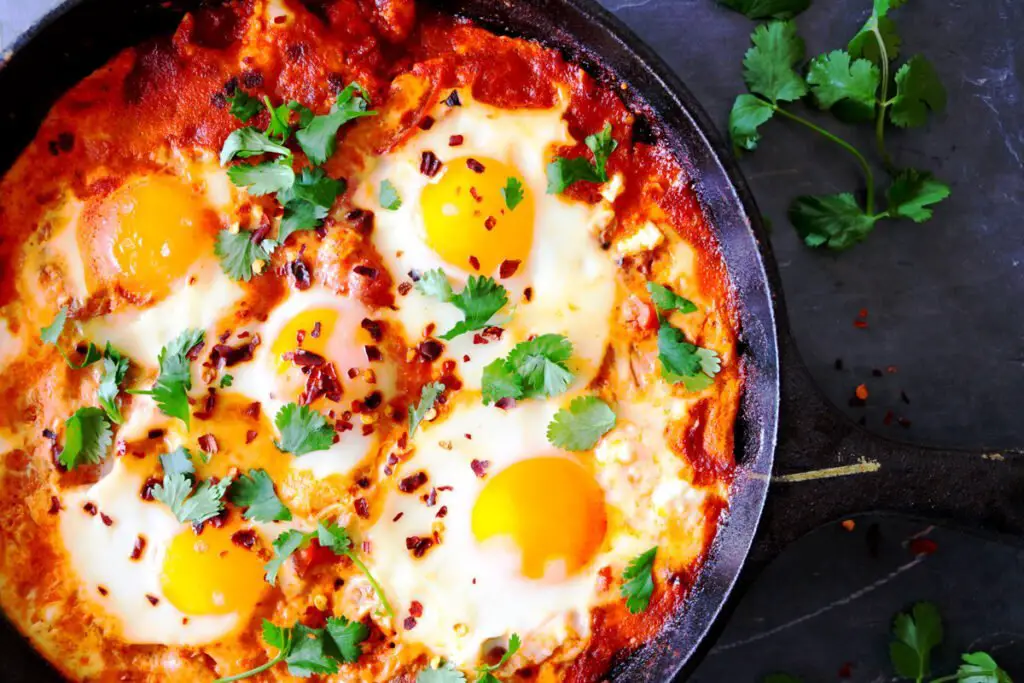
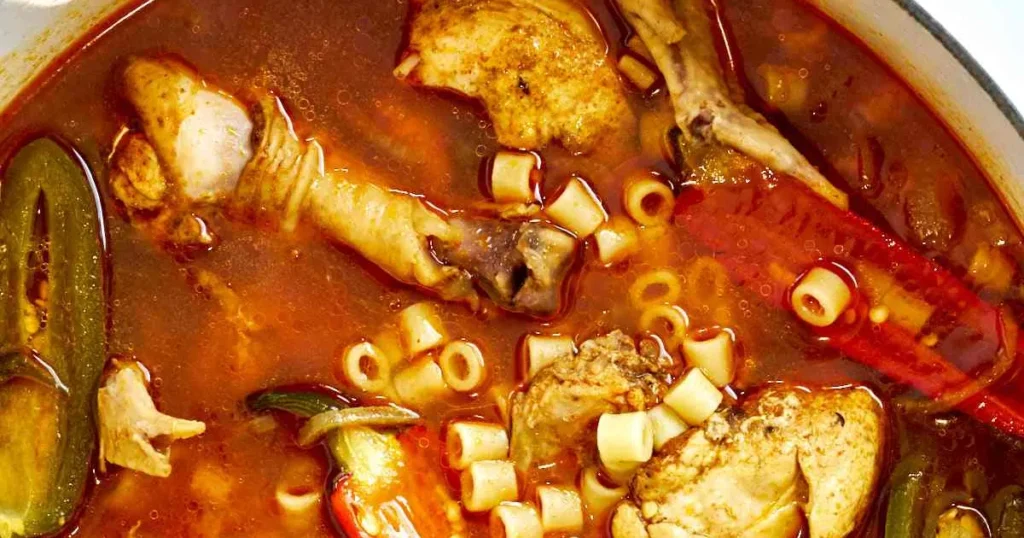
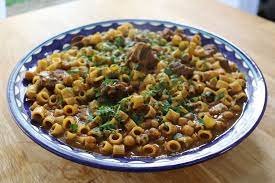
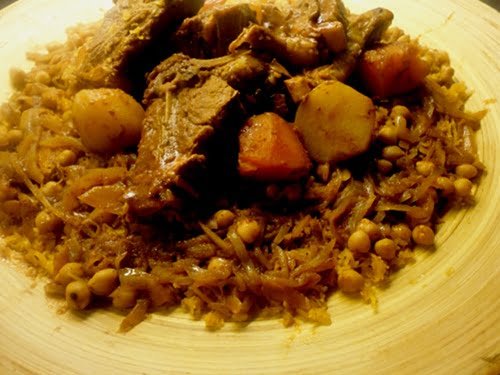
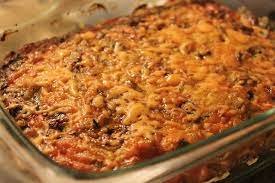
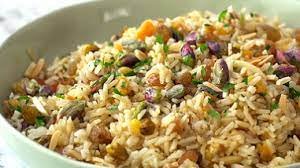
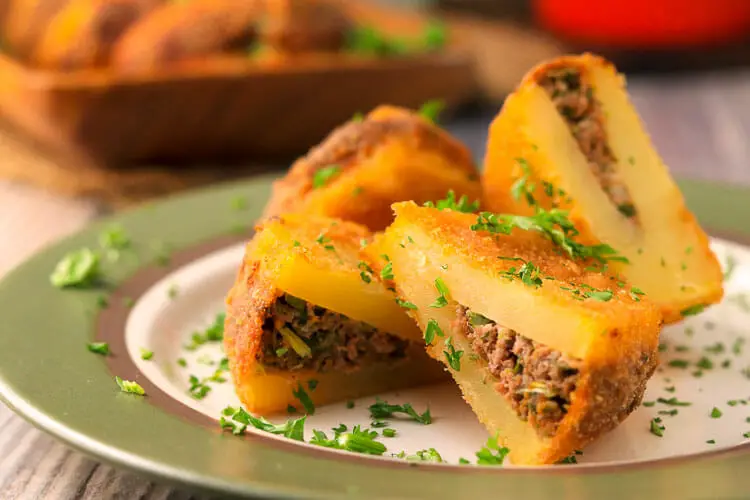
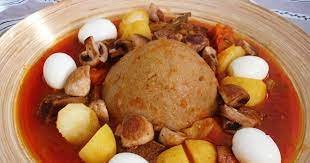
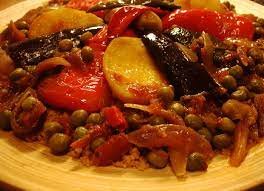
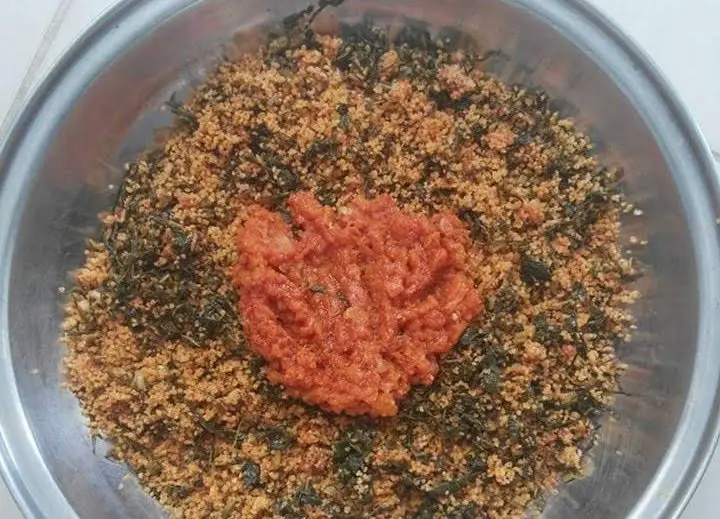
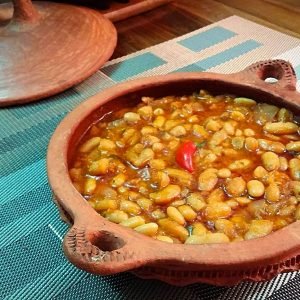
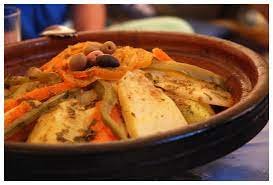
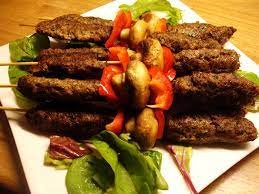
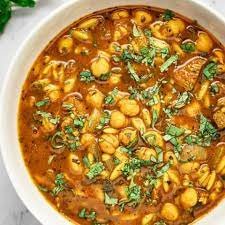
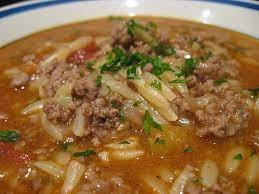
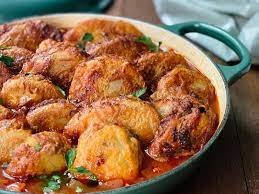
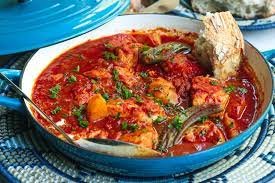
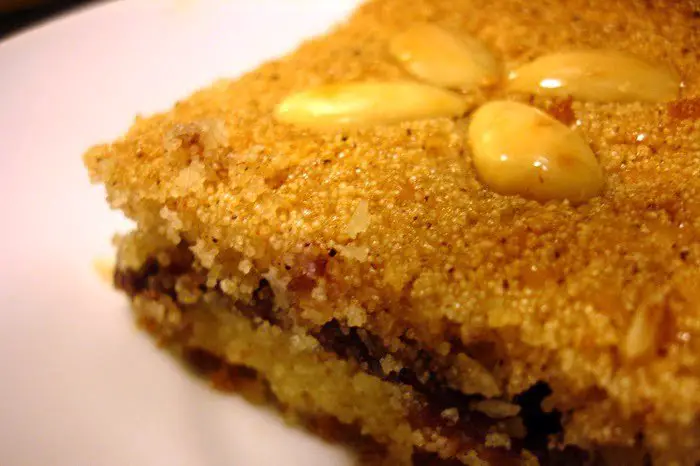
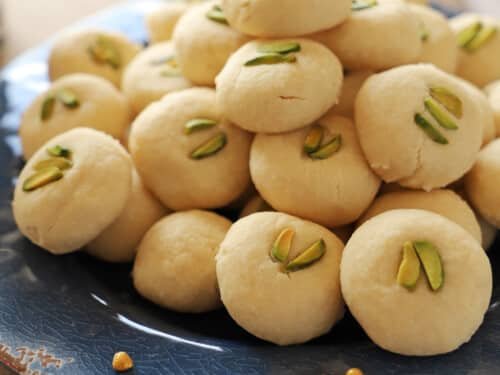
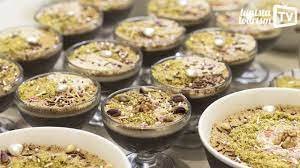
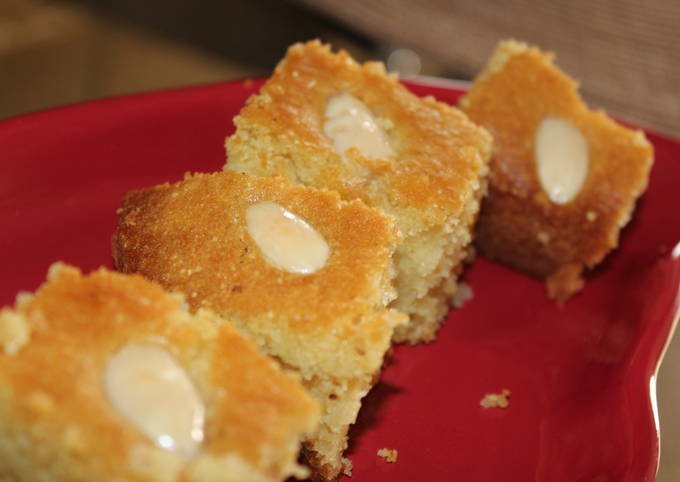
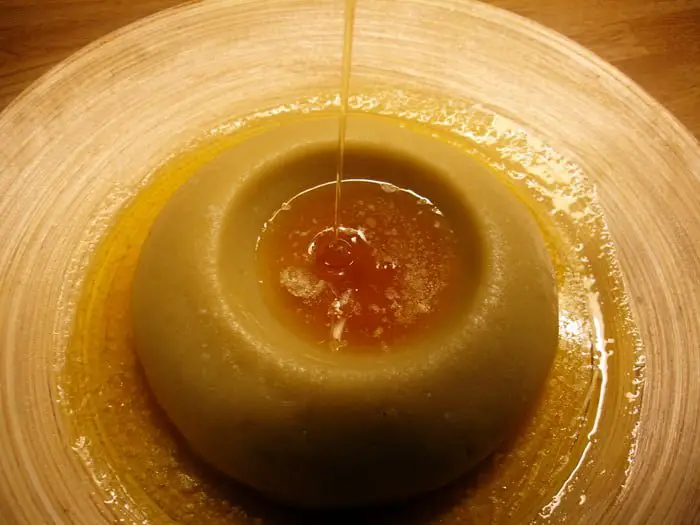
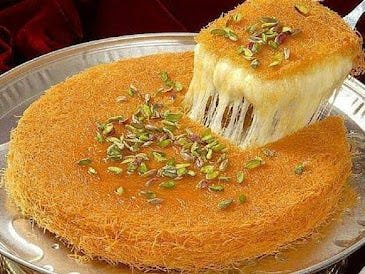

Delving into the world of Libyan cuisine is akin to embarking on a flavorful voyage. The dishes, vibrant and aromatic, encapsulate the nation’s rich history and the warmth of its people.
Facts About Libya
Libya has a traumatic past. where it has been occupied repeatedly over the years.
The country celebrated independence in 1951. In 1969 Mummar Gaddafi staged a coup and remained in dictatorial power until a NATO lead ousting in 2011. Since then, the country has suffered from extensive internal unrest.
This proves that having rich natural deposits is no guarantee of a country’s prosperity.

The Great Man-Made River

Libya takes pride in the Great Man-Made River, an enormous irrigation project that moves water from underground sources in the south to the dry areas in the north.
This incredible engineering feat spans more than 2,800 kilometers and has been vital in helping agriculture thrive and maintaining people’s way of life.
Arch of Marcus Aurelius




The Arch of Marcus Aurelius was constructed around 165 AD in the city of Oea in Libya to commemorate the triumphs of Lucius Verus. He defeated the Parthian Empire and captured their capital city, Ctesiphon.
Currently, the Arch of Marcus Aurelius is the only structure left from the Roman era in Oea, but the arch itself is in good condition. Keep in mind, it’s a good idea to check your government’s foreign office for official advice before planning a trip to Libya.
Libya Has the Largest Proven Oil Reserves in Africa
Libya holds the biggest confirmed oil reserves in Africa. Its oil reserves are not only the largest on the continent but also rank as the ninth-largest globally, with about 48 billion barrels in 2019. The region is attractive for oil production because it is cost-effective (around $1 per barrel), has low sulfur content, and is conveniently close to European markets. Approximately 85% of Libya’s oil gets exported to various European countries.
A noteworthy fact is that Gaddafi, the former leader, used the income from oil to maintain control. He distributed a substantial portion of the oil revenues to Libyan officials, ensuring their loyalty and stabilizing his rule.
90% of Libya is the Sahara Desert

More than 90% of Libya consists of desert or semi-desert terrain. The country includes the Sahara Desert, which is the largest hot desert globally. Within Libya, sections of the Sahara Desert are known as the Libyan Desert.
The Libyan Sahara Desert includes the Ubari Sand Sea, which features a vibrant red lake nourished by springs from an underground aquifer formed by ancient rains. The lake gets its eye-catching color from algae that have adapted to live in the salty waters.
Libya is Home to an Ancient Volcano
Waw an Namus, also spelled Wau-en-Namus (Arabic: واو الناموس), is a volcano situated in Libya. This volcano, either from the Pleistocene or Holocene era, is found in the eastern Fezzan region.
The exact cause of volcanic activity in this area and at Al Haruj further north is not well understood. While radiometric dating suggests an age of about 200,000 years, other indirect clues suggest the possibility that the volcano might have formed during the Holocene period or even more recently, in historical times.

Libya’s History and the Effect it Has Had on the Cuisine
Ancient Libya (before 7th century AD)
Libya was home to several ancient civilizations, such as the following.
- Phoenicians
- Carthaginians
- Greeks
- Romans,
- Vandals.
These peoples introduced crops such as olives, grapes, wheat, barley, and figs, as well as dishes such as couscous, harissa, and bazeen (a type of bread made from barley flour).
They also traded with other regions, such as Egypt, Sudan, and Sub-Saharan Africa, and incorporated spices, dates, and dried fruits into their cuisine.
Islamic Libya (7th-16th century AD)
Libya was conquered by the Arab Muslims in the 7th century, who brought Islam and the Arabic language to the region. They also introduced new foods, such as rice, lentils, chickpeas, almonds, and citrus fruits, as well as dishes such as shorba (a type of soup), usban (a stuffed sausage), and mbakbaka (a meat and pasta stew).
They also influenced the preparation and consumption of food, such as the use of halal meat, the prohibition of alcohol, and the observance of fasting during Ramadan.
Ottoman Libya (16th-20th century AD)

Libya became part of the Ottoman Empire in the 16th century, and remained under its rule until the early 20th century. The Ottomans brought Turkish cuisine and culture to Libya, such as the use of coffee, tea, and sweets, as well as dishes such as
- Borek (a pastry filled with cheese, meat, or spinach)
- Dolma (stuffed vegetables)
- Baklava (a dessert made of filo pastry, nuts, and syrup).
They also introduced the fez (a red hat) and the kaftan (a long robe) as traditional clothing for men.
Italian Libya (1911-1943)

Libya was colonized by Italy in 1911, after the Italo-Turkish War. The Italians brought European cuisine and culture to Libya, such as the use of pasta, cheese, tomato sauce, and wine, as well as dishes such as pizza, lasagna, and macaroni.
They also built modern infrastructure, such as roads, railways, and ports, and encouraged Italian immigration and settlement in Libya. They also suppressed Libyan resistance and nationalism, and committed atrocities against the local population, such as the use of concentration camps and poison gas.
Independent Libya (1951-1969)

Libya gained its independence in 1951, after the end of World War II and the United Nations resolution. The country was ruled by King Idris, who established a constitutional monarchy and a parliamentary system.
The country also joined the Arab League and the Organization of African Unity, and developed its oil industry and economy. The cuisine of this period was a mixture of the previous influences, as well as the introduction of new foods and dishes, such as corn, potatoes, and ice cream, as well as fast food, such as burgers and fries.
Gaddafi’s Libya (1969-2011)

Libya was taken over by a military coup in 1969, led by Colonel Muammar Gaddafi, who abolished the monarchy and established a socialist republic. He also pursued a pan-Arab and pan-African ideology and supported various revolutionary and anti-imperialist movements around the world.
He also faced opposition and isolation from the West, and was accused of sponsoring terrorism and human rights violations. The cuisine of this period was influenced by Gaddafi’s policies, such as the promotion of self-reliance and the rejection of foreign influence, as well as the sanctions and embargoes imposed by the international community.
The cuisine was also affected by the availability and affordability of food, as well as the social and political unrest in the country.
Post-Gaddafi Libya (2011-present)

Libya was plunged into a civil war in 2011, after a popular uprising against Gaddafi’s regime, supported by a NATO-led intervention. Gaddafi was captured and killed by rebel forces in October 2011, and the National Transitional Council (NTC) took over the country.
The NTC was replaced by the General National Congress (GNC) in 2012, and then by the House of Representatives (HoR) in 2014. However, the country remained divided and unstable, as different factions and militias competed for power and resources.
The cuisine of this period is influenced by the ongoing conflict and insecurity, as well as the humanitarian and economic crisis in the country.
The cuisine is also influenced by the efforts to preserve and revive the Libyan identity and culture, as well as the exposure to new foods and dishes, such as sushi, pizza, and cake.
References
- en.wikipedia.org
- theguardian.com
- bbc.com
- theconversation.com
- en.wikipedia.org (Libyan Cuisine)
- libyanheritagehouse.org
- rand.org
How Libya’s Climate and Geography has Influenced Libyan Cuisine
Libya’s climate and geography have influenced its cuisine in various ways, such as:
Libyan Coast

The Mediterranean coast provides access to fresh seafood, such as fish, shrimp, squid, and octopus, as well as fruits and vegetables, such as olives, grapes, figs, and citrus.
Libyan Desert

The Sahara Desert limits the availability of water and crops, and requires the preservation of food, such as by drying, salting, or pickling. Some of the foods that are adapted to the desert conditions are dates, nuts, dried meat, cheese, and bread.
Libyan Highlands and Steppes
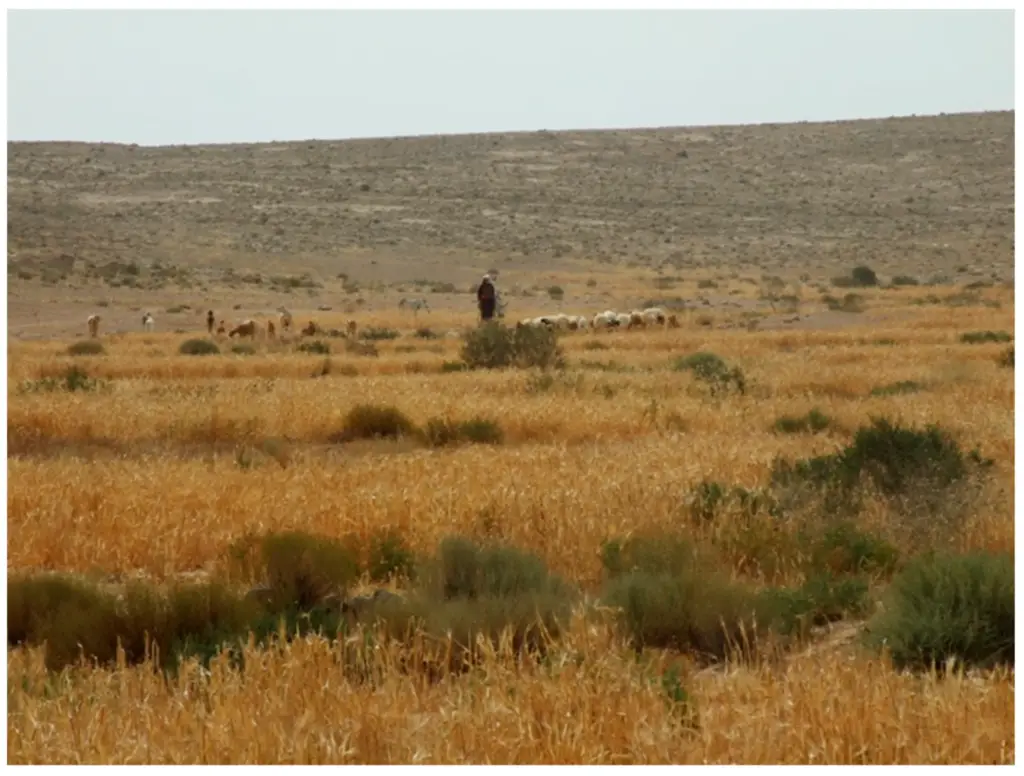
The highlands and steppes offer grazing land for livestock, such as sheep, goats, camels, and cattle, which provide meat, milk, and dairy products, such as butter, yogurt, and cheese.
Different Ethic Groups
The different regions and ethnic groups of Libya have their own specialties and preferences, such as the
- Berber dishes of bazeen (a barley bread with meat and vegetable sauce).
- Aseeda (a porridge-like dessert.
- Arab dishes of couscous (steamed semolina with meat and vegetable stew)
- Shorba (a soup with meat, vegetables, and spices).
- Turkish dishes of borek (a pastry with cheese, meat, or spinach filling)
- Dolma (stuffed vegetables), and the Italian dishes of pasta, pizza, and lasagna.
References
Understanding the Essence of Libyan Cuisine

At the crossroads of Africa and the Mediterranean, Libyan food is a harmonious symphony of flavors and traditions. An intimate understanding of this cuisine offers a gateway into Libya’s rich tapestry of history and cultural interplay.
At its core, Libyan food is characterized by simplicity and freshness. The coastal Mediterranean influence ensures a bounty of seafood, particularly fish like tuna and sardines. Olive oil, a Roman legacy, is generously used, enhancing dishes with its rich, fruity undertones.
Grains play a starring role. Couscous, a North African staple, is often served with stews, absorbing their flavors and adding texture. Bazeen, a unique Libyan dish, is made from barley flour and often accompanied by a rich lamb or chicken stew.
Spices, a testament to the Arab and Saharan influences, are used judiciously. Coriander, cumin, and chili create a delicate balance, imparting warmth without overpowering the essence of the primary ingredients. Harissa, a fiery chili paste, complements many dishes, adding a spicy zest.
Dates, a gift from the Berber tradition, hold special importance. Consumed as snacks or used in desserts, they’re also often stuffed with almonds or walnuts, showcasing the sweet-meets-savory theme prevalent in Libyan desserts.
The Ottoman influence surfaces in pastries and sweets, like baklava, while the Italian colonial period introduced pasta dishes that were assimilated and adapted with a Libyan touch.
But beyond ingredients and recipes, the true essence of Libyan cuisine lies in its communal nature. Meals are a gathering, a time for family and friends to connect. Traditional meals are often eaten with hands, from a communal plate, symbolizing unity and shared experiences.
In essence, Libyan cuisine is more than just food. It’s a narrative, a celebration, and an embodiment of the country’s resilient spirit and diverse heritage.
Libyan Culinary Traditions
Drenched in the warmth of the Mediterranean sun and kissed by the sands of the Sahara, Libya stands as a culinary crossroads where diverse ancient cultures have interwoven their gastronomic tales. The culinary traditions of Libya are an embodiment of its rich history, its exchanges with neighboring lands, and its indigenous flavors.

Central to Libyan food tables is bread, often freshly baked in communal ovens or at home. Varieties range from the thick, soft “khobz” to the thin, crispy “rukhal.” Bread becomes the utensil, scooping up stews and sauces in shared meals.
Stews, or “tagines,” showcase Libya’s talent for blending spices. Whether it’s a lamb, chicken, or vegetable tagine, the aromatic trio of coriander, chili, and garlic often makes its presence felt. These stews are frequently paired with couscous, a grain that tells of North African Berber origins and remains a favorite.
A culinary gem is “osban,” sausages stuffed with a mixture of rice, herbs, and meat, encapsulating the nation’s penchant for rich, hearty flavors.
Seafood, owing to Libya’s extensive coastline, features prominently. Grilled fish, seasoned simply with olive oil, lemon, and a sprinkling of spices, reflects the Mediterranean’s influence.
The Sahara’s touch is evident in “mbatten,” deep-fried potato slices filled with minced meat and spices. This dish, often enjoyed during special occasions, demonstrates the desert communities’ ability to create rich, flavorful dishes despite resource constraints.
Libyan sweets, like “magrood,” date-filled semolina cookies, celebrate the country’s love for dates, while the honey-drenched baklava nods to the Ottoman past.
Every Libyan dish, from the simple to the elaborate, encapsulates a story, a memory, or a shared cultural experience. It’s not merely about sustenance; it’s a celebration of Libya’s mosaic of traditions, its hospitality, and its enduring spirit.
The Rich Tapestry of Libyan Spices
Libyan cuisine is a captivating mosaic of flavors, and at the heart of this culinary journey lie the vibrant and aromatic spices that define the nation’s cooking. As one traverses the diverse landscapes of Libya, from the coastal regions to the Saharan expanses, the spices used in Libyan kitchens reflect the country’s history, geography, and cultural influences.
Libyan spices – Cumin (Kamun)
Widely regarded as the king of spices in Libyan cuisine, cumin adds warmth and depth to many dishes. Its earthy and nutty undertones complement the robust flavors of meats, stews, and rice dishes.
In the bustling markets, the air is often redolent with the scent of freshly ground cumin.
Libyan spices – Coriander (Kuzbara)
Coriander, with its citrusy and slightly sweet notes, is a versatile spice that finds its way into both savory and sweet Libyan dishes.
Whether it’s a pot of couscous or a platter of grilled meats, coriander imparts a refreshing and aromatic touch, elevating the overall dining experience.
Libyan spices – Cinnamon (Qerfa)
A hint of cinnamon adds a subtle sweetness to Libyan cuisine. It often graces desserts, tagines, and spiced rice dishes.
The aromatic warmth of cinnamon wafts through kitchens, inviting family and friends to gather around the table.
Libyan spices – Chili (Filfil Libi)
While not as fiery as some North African counterparts, Libyan cuisine embraces a moderate level of heat. Locally grown chilies, known as Filfil Libi, lend a gentle kick to various dishes.
They are used judiciously, allowing the nuanced flavors of other spices to shine.
Libyan spices – Mix Spices (Bharat)
Libyan households often have their version of “bharat,” a spice blend that may include a combination of cinnamon, cumin, coriander, and other secret ingredients.
This unique blend, passed down through generations, adds a distinctive touch to soups, stews, and grilled meats.
Libyan spices – Turmeric (Kurkum)
With its golden hue and warm, slightly bitter taste, turmeric imparts both color and flavor to Libyan dishes. It is a key ingredient in many rice and vegetable preparations, providing a subtle earthiness.
As the sun sets over the Mediterranean, Libyan kitchens come alive with the symphony of these spices, each telling a story of the land, its people, and the culinary heritage that has endured for centuries.
From the bustling markets of Tripoli to the serene oases in the desert, the spices of Libya weave a rich tapestry of flavors that beckon both locals and visitors to savor the essence of this enchanting North African nation.
How Healthy is Libyan Food?
According to the World Health Organization, Libya has a population of about 6.8 million people, and a life expectancy of 72.7 years.
The main health challenges in Libya are the ongoing conflict and insecurity, the COVID-19 pandemic, the lack of access to health services and medicines, and the prevalence of non-communicable diseases, such as cardiovascular diseases, diabetes, and cancer.
Libyan cuisine is a blend of different cultural influences, such as Berber, Arab, Turkish, and Italian. It is based on staple foods, such as bread, couscous, rice, pasta, meat, dates, and olives.
Libyan cuisine can be healthy, as it uses fresh ingredients, herbs, spices, and olive oil, and includes seafood, vegetables, fruits, and nuts. However, some Libyan dishes can also be high in calories, fat, salt, and sugar, such as fried pastries, sweets, and fast food.
The healthiness of Libyan cuisine depends on the balance and moderation of the food choices and portions.
References
The Most Popular Libyan Recipes
Libyan cuisine is diverse, with influences from North Africa, the Mediterranean, and the Middle East. Here are some of the most popular and iconic foods in Libya:
1. Couscous:
Couscous is a staple in Libyan cuisine, often served as a base for various dishes. It is made from crushed wheat and is typically steamed, fluffy, and served with stews, vegetables, or meats.
2. Bazeen:
Bazeen is a traditional Libyan dish made from barley flour and water. It has a dough-like consistency and is often eaten with a rich tomato and meat sauce. Bazeen is a favorite during special occasions and celebrations.
3. Shakshuka:
Shakshuka is a popular North African and Middle Eastern dish that has found its way into Libyan cuisine. It consists of poached eggs in a spicy tomato and pepper sauce, often flavored with garlic and cumin.
4. Ghreyba:
Ghreyba are Libyan shortbread cookies that are both crumbly and melt-in-the-mouth. These delicious cookies are often flavored with almonds, sesame seeds, or coconut and are enjoyed during festive occasions.
5. Harira:
Harira is a hearty soup commonly consumed during the holy month of Ramadan. It typically contains lentils, chickpeas, tomatoes, and various spices. Harira is known for its comforting and filling nature.
6. Sfinz:
Sfinz are Libyan donuts, deep-fried until golden brown and then dusted with powdered sugar. They are often enjoyed with tea or coffee, making them a popular sweet treat.
7. Libyan Flatbreads:
Various types of flatbreads are prevalent in Libyan cuisine, including khubz, a round flatbread, and narash, a thin and crispy bread. These bread varieties are commonly served with dips, stews, or as an accompaniment to meals.
8. Grilled Meats:
Libya is known for its delicious grilled meats, especially lamb and chicken. Grilled kebabs, seasoned with a mix of spices, are a popular street food and are often enjoyed with flatbreads and sauces.
9. Date Fruits:
Dates hold cultural significance in Libyan cuisine and are often consumed as a sweet treat or used in various desserts. Libyan date varieties are enjoyed fresh or dried and are sometimes stuffed with nuts.
10. Mint Tea:
Mint tea is a popular beverage in Libya, often served in elaborate tea ceremonies. It is made with green tea leaves, fresh mint leaves, and sugar, creating a refreshing and aromatic drink.
Libyan cuisine reflects a rich blend of flavors, ingredients, and cultural influences, making it a delightful exploration for food enthusiasts. The diverse array of dishes showcases the unique culinary identity of the country.
Libyan Food Recipes you can Try at Home
Libyan food – Sharba Libiya (Libyan Soup)

Historically rooted, Sharba Libiya is a rich, spicy soup that graces Libyan tables, especially during the holy month of Ramadan.
Ingredients for Sharba Libiya
- 500g Lamb or chicken meat
- 2 finely chopped onions
- 3 diced tomatoes
- 2 tbsp tomato paste
- Fresh cilantro, chopped
- 1 tsp dried mint
- Salt & pepper to taste
- ½ cup of orzo or rice
- 1 chili pepper (optional)
Libyan food recipes – Sharba Libiya
In a pot, sear the meat until browned. Add onions and cook until translucent. Mix in tomatoes, tomato paste, and water, letting it simmer. After half an hour, introduce orzo or rice, spices, and let it meld together.
Serve this comforting soup piping hot, garnished with fresh cilantro. A mint tea pairs exquisitely, adding a refreshing touch.
Libyan Cuisine – Taktouka

Taktouka is a flavorful and refreshing salad made primarily of roasted bell peppers and tomatoes. Though its origins can be traced back to the Maghreb region of North Africa, Taktouka has made its mark in Libyan cuisine as a favorite appetizer or side dish. Libya’s position along the Mediterranean coast has meant that its cuisine often mirrors some of the fresh, vibrant flavors characteristic of Mediterranean dishes. Taktouka is a nod to this tradition, with its use of fresh, simple ingredients coming together to create a harmonious blend of tastes and textures.
Ingredients for Taktouka
- 2-3 large bell peppers (preferably a mix of green and red for color and flavor)
- 3 ripe tomatoes
- 3 garlic cloves, minced
- 2 tablespoons of olive oil
- 1 teaspoon of ground cumin
- 1 teaspoon of paprika
- Salt, to taste
- Black pepper, to taste
- A pinch of cayenne pepper (optional, for added heat)
- Fresh cilantro or parsley, finely chopped for garnish
- 1 tablespoon of fresh lemon juice
How to Prepare Taktouka
Roasting the Vegetables
- Preheat your oven to 475°F (245°C) or set your grill to medium-high heat.
- Place the bell peppers and tomatoes on a baking sheet or directly on the grill.
- Roast or grill them, turning occasionally, until they’re charred and softened. This typically takes about 15-20 minutes for bell peppers and 10-12 minutes for tomatoes.
- Once roasted, transfer the vegetables to a bowl and cover with plastic wrap. This allows them to steam and makes peeling easier.
Peeling and Chopping
- When the vegetables are cool enough to handle, peel off their skins.
- Discard the stems and seeds of the bell peppers.
- Finely chop the bell peppers and tomatoes and transfer them to a mixing bowl.
Sautéing
- In a skillet, heat the olive oil over medium heat.
- Add the minced garlic and sauté until it’s fragrant but not browned.
- Add the chopped bell peppers and tomatoes to the skillet.
- Season with cumin, paprika, salt, black pepper, and cayenne pepper.
- Cook for about 10-12 minutes, stirring occasionally, until the mixture is thickened.
Final Touches
- Remove the skillet from heat and stir in the fresh lemon juice.
- Adjust the seasoning if necessary.
- Transfer the Taktouka to a serving bowl and garnish with freshly chopped cilantro or parsley.
Serving
Taktouka can be served warm, at room temperature, or even slightly chilled, depending on personal preference. It pairs beautifully with crusty bread, as part of a mezze spread, or as an accompaniment to grilled meats and fish.
Drink Pairing
A refreshing mint tea or a cold glass of white wine complements the flavors of Taktouka beautifully.
Enjoy your Libyan culinary adventure with this delightful dish!
Libyan food recipes – Couscous Bil-Hoot (Fish Couscous)

Couscous is a staple in North African cuisines and holds a revered place in Libyan culinary traditions. While couscous is often paired with lamb or chicken in many North African dishes, the Libyan coastline along the Mediterranean has given birth to an exquisite variant: Couscous Bil-Hoot, or Fish Couscous. This dish beautifully encapsulates the union of the desert’s grain with the sea’s bounty, offering a delightful taste of Libya’s rich geography and culinary heritage.
Ingredients for Couscous Bil-Hoot
For the Couscous
- 2 cups of fine couscous
- 2 tablespoons of olive oil
- ½ teaspoon of salt
- 2-2.5 cups of boiling water or fish stock
For the Fish and Sauce
- 2 lbs of firm white fish fillets (like sea bass, grouper, or snapper)
- Salt, to taste
- Black pepper, to taste
- 1 teaspoon of ground cumin
- 3 tablespoons of olive oil
- 1 large onion, finely chopped
- 4 garlic cloves, minced
- 1 red bell pepper, sliced
- 2 cups of diced tomatoes (canned or fresh)
- 2 tablespoons of tomato paste
- 1 teaspoon of paprika
- A pinch of cayenne pepper (optional)
- 2 cups of fish stock or water
- 2 tablespoons of chopped fresh parsley
- 2 tablespoons of chopped fresh cilantro
- 1 lemon, sliced
Libyan food recipes – Couscous Bil-Hoot
Preparing the Couscous
- Place couscous in a large bowl, drizzle with olive oil, and sprinkle with salt. Mix well.
- Pour the boiling water or fish stock over the couscous, ensuring it’s completely covered.
- Cover the bowl with a cloth or lid and let it sit for about 20 minutes.
- Fluff the couscous with a fork, ensuring the grains are separate and not clumpy.
Marinating the Fish
- Season the fish fillets with salt, black pepper, and cumin. Set aside for about 15 minutes.
Preparing the Sauce
- In a large skillet or pot, heat the olive oil over medium heat.
- Add the chopped onion and sauté until translucent.
- Stir in the minced garlic and red bell pepper, cooking until they soften.
- Mix in the diced tomatoes, tomato paste, paprika, and cayenne (if using). Cook for a few minutes until the tomatoes break down.
- Pour in the fish stock or water, and bring the mixture to a boil. Reduce heat and simmer for about 10 minutes, allowing the sauce to thicken slightly.
- Add the fish fillets to the sauce, ensuring they are well-covered. Cook for about 5-7 minutes on each side or until the fish is cooked through and flakes easily.
- Sprinkle with chopped parsley, cilantro, and arrange lemon slices on top.
Serving
- In a large serving dish, spread the fluffed couscous evenly.
- Place the fish fillets on top, and pour over the sauce.
- Garnish with additional fresh herbs and lemon slices if desired.
Serving Suggestions: Enjoy your Couscous Bil-Hoot with a side of Libyan salad or roasted vegetables. The dish is traditionally enjoyed with fingers or a piece of bread, using it to scoop up the couscous and fish.
Drink Pairing: A glass of crisp white wine or a cold mint tea pairs wonderfully with the rich flavors of the fish couscous.
Relish in the taste of the Libyan coastline with every bite of this delicious and hearty dish!
Libyan Food Recipes – Shorba or Sharba (Lamb and Tomato Soup)

History and Background of Shorba: A Hearty Elixir from North Africa
Shorba, also known as Sharba, is a traditional soup with roots deeply embedded in the culinary history of North Africa, particularly in countries like Libya, Tunisia, and Algeria. This soul-warming dish reflects the region’s historical ties to Berber, Arab, and Mediterranean influences.
Shorba, featuring a comforting blend of lamb, tomatoes, and aromatic spices, is a testament to the resourcefulness of North African cuisine in transforming simple ingredients into a nourishing and flavorful elixir. This soup not only warms the body but also provides a taste of the diverse and vibrant culinary traditions of North Africa.
Region of Origin: North Africa (Libya, Tunisia, Algeria)
Shorba originates from the kitchens of North Africa, where it has been a staple for generations. The use of lamb, tomatoes, and a variety of spices reflects the region’s access to fresh and aromatic ingredients.
Whether served during chilly evenings or as a comforting dish during festive occasions, Shorba encapsulates the essence of hospitality and communal dining in North African culture.
Ingredients for Shorba:
- Main Ingredients:
- 1 lb lamb, cut into small pieces
- 1 large onion, finely chopped
- 3 tomatoes, diced
- 2 tablespoons tomato paste
- 1/2 cup vermicelli or small pasta
- 1/4 cup olive oil
- 6 cups chicken or lamb broth
- Salt and pepper to taste
- Aromatic Spices:
- 1 teaspoon ground cumin
- 1 teaspoon ground coriander
- 1/2 teaspoon ground cinnamon
- Pinch of saffron threads (optional)
- For Garnish:
- Fresh cilantro or parsley, chopped
- Lemon wedges
Recipe for Shorba:
Preparation (Serves 4-6):
Estimated Cooking Time: 1.5 to 2 hours
Calories (per serving): Approximately 300 calories
Ingredients Preparation:
- Prepare Lamb:
- Cut lamb into small, bite-sized pieces.
- Chop Vegetables:
- Finely chop the onion.
- Dice the tomatoes.
Cooking Process:
1. Sautéing Aromatics:
- Step 1: In a large pot, heat olive oil over medium heat.
- Step 2: Sauté chopped onions until translucent.
2. Browning Lamb:
- Step 3: Add lamb pieces to the pot, browning on all sides.
3. Adding Tomatoes and Spices:
- Step 4: Stir in diced tomatoes and tomato paste.
- Step 5: Add ground cumin, ground coriander, ground cinnamon, and saffron (if using).
- Step 6: Season with salt and pepper.
4. Simmering and Cooking:
- Step 7: Pour in chicken or lamb broth, bringing the mixture to a boil.
- Step 8: Reduce heat to low, cover, and simmer for 1 to 1.5 hours, allowing the lamb to become tender.
5. Adding Vermicelli:
- Step 9: Add vermicelli or small pasta to the pot, cooking until tender.
6. Garnishing and Serving:
- Step 10: Garnish Shorba with chopped fresh cilantro or parsley.
- Step 11: Serve hot, accompanied by lemon wedges for a burst of citrus flavor.
Indulge in the comforting flavors of North Africa with Shorba, a lamb and tomato soup that embodies the rich culinary traditions of the region. Share this nourishing soup with loved ones, savoring the warmth and spices that make it a true delight.
Libyan Food Recipes – Mbakbka (Libyan One-Pot Pasta Dish)

History and Background of Mbakbka: Libyan Culinary Heritage in a Pot
Mbakbka, a flavorful one-pot pasta dish, is a culinary gem that traces its roots to the heart of Libyan kitchens. This dish showcases the ingenuity of Libyan cuisine, combining pasta with a medley of spices and herbs. The history of Mbakbka is deeply entwined with the country’s cultural diversity, representing the fusion of Berber, Arab, and Mediterranean influences.
As a one-pot wonder, Mbakbka is not only a testament to Libya’s resourceful culinary traditions but also a symbol of communal sharing and the joy of simple yet delicious meals.
Region of Origin: Libya
Mbakbka originates from the vibrant culinary landscape of Libya, a country on the Mediterranean coast of North Africa. Libyan cuisine is marked by its use of fresh and locally sourced ingredients, as well as a harmonious blend of spices.
Mbakbka, a one-pot wonder, reflects the practical approach to cooking in Libyan households, where simplicity and flavor intertwine to create a satisfying and nourishing meal.
Ingredients for Mbakbka:
- Main Ingredients:
- 1 lb pasta (such as penne or fusilli)
- 1 lb ground beef or lamb
- 1 large onion, finely chopped
- 2 tomatoes, diced
- 3 cloves garlic, minced
- 1/4 cup tomato paste
- 1/4 cup olive oil
- 6 cups beef or vegetable broth
- Salt and pepper to taste
- Aromatic Spices:
- 1 teaspoon ground cumin
- 1 teaspoon ground coriander
- 1/2 teaspoon ground cinnamon
- Pinch of cayenne pepper (optional)
- For Garnish:
- Fresh parsley, chopped
- Lemon wedges
Recipe for Mbakbka:
Preparation (Serves 4-6):
Estimated Cooking Time: 30-40 minutes
Calories (per serving): Approximately 500 calories
Ingredients Preparation:
- Prepare Pasta:
- Cook the pasta according to package instructions, al dente.
- Drain and set aside.
- Chop Vegetables:
- Finely chop the onion.
- Dice the tomatoes.
Cooking Process:
1. Sautéing Aromatics:
- Step 1: In a large pot, heat olive oil over medium heat.
- Step 2: Sauté chopped onions until translucent.
- Step 3: Add minced garlic and continue sautéing until aromatic.
2. Browning Meat:
- Step 4: Add ground beef or lamb to the pot, browning on all sides.
3. Adding Tomatoes and Spices:
- Step 5: Stir in diced tomatoes and tomato paste.
- Step 6: Add ground cumin, ground coriander, ground cinnamon, and cayenne pepper (if using).
- Step 7: Season with salt and pepper.
4. Cooking Pasta:
- Step 8: Pour in beef or vegetable broth, bringing the mixture to a boil.
- Step 9: Add the cooked pasta to the pot, stirring to combine.
5. Simmering and Garnishing:
- Step 10: Allow Mbakbka to simmer for 10-15 minutes, ensuring the flavors meld.
- Step 11: Garnish with chopped fresh parsley.
- Step 12: Serve hot, accompanied by lemon wedges for added zest.
Embrace the simplicity and richness of Libyan cuisine with Mbakbka, a one-pot pasta dish that captures the essence of North African flavors. Share this hearty and flavorful meal with friends and family, celebrating the communal spirit of Libyan dining.
Libyan Food Recipes – Rishta (Libyan-Style Pasta)

History and Background of Rishta: A Libyan Delight with Pasta Perfection
Rishta, a beloved dish in Libyan cuisine, offers a unique take on pasta, showcasing the country’s culinary creativity and influences from across the Mediterranean. With roots deeply embedded in Libyan traditions, Rishta combines the simplicity of pasta with the rich flavors of North African spices.
This dish reflects Libya’s historical connections to various cultures and its commitment to transforming everyday ingredients into a culinary masterpiece. Rishta not only fills the stomach but also warms the heart, making it a cherished part of Libyan meals.
Region of Origin: Libya
Originating from Libya, Rishta is a testament to the country’s diverse culinary heritage. Libyan cuisine, situated at the crossroads of the Mediterranean, is characterized by its use of fresh ingredients, aromatic spices, and a harmonious blend of flavors.
Rishta, with its distinct preparation and seasonings, embodies the warmth and hospitality that define Libyan kitchens. Whether enjoyed during family gatherings or special occasions, Rishta captures the essence of Libyan culture through its delightful taste and comforting appeal.
Ingredients for Rishta:
- Main Ingredients:
- 1 lb small pasta shapes (such as elbows or small shells)
- 1 lb ground beef or lamb
- 1 large onion, finely chopped
- 2 tomatoes, diced
- 3 cloves garlic, minced
- 1/4 cup tomato paste
- 1/4 cup olive oil
- Salt and pepper to taste
- Aromatic Spices:
- 1 teaspoon ground cumin
- 1 teaspoon ground coriander
- 1/2 teaspoon paprika
- 1/2 teaspoon ground cinnamon
- For Garnish:
- Fresh parsley, chopped
Recipe for Rishta:
Preparation (Serves 4-6):
Estimated Cooking Time: 30-40 minutes
Calories (per serving): Approximately 400 calories
Ingredients Preparation:
- Boil Pasta:
- Cook the pasta according to package instructions, al dente.
- Drain and set aside.
- Chop Vegetables:
- Finely chop the onion.
- Dice the tomatoes.
- Mince garlic.
Cooking Process:
1. Sautéing Aromatics:
- Step 1: In a large skillet, heat olive oil over medium heat.
- Step 2: Sauté chopped onions until translucent.
- Step 3: Add minced garlic and continue sautéing until aromatic.
2. Browning Meat:
- Step 4: Add ground beef or lamb to the skillet, cooking until browned.
3. Adding Tomatoes and Spices:
- Step 5: Stir in diced tomatoes and tomato paste.
- Step 6: Add ground cumin, ground coriander, paprika, and ground cinnamon.
- Step 7: Season with salt and pepper.
4. Simmering and Combining:
- Step 8: Allow the mixture to simmer for 15-20 minutes, letting the flavors meld.
- Step 9: Add the cooked pasta to the skillet, tossing to coat the pasta in the savory sauce.
5. Garnishing and Serving:
- Step 10: Garnish Rishta with chopped fresh parsley.
- Step 11: Serve hot, appreciating the rich flavors of this Libyan-style pasta.
Delight in the flavors of Libya with Rishta, a pasta dish that brings together the essence of North African cuisine. Share this comforting and flavorful meal with family and friends, celebrating the cultural richness and culinary ingenuity of Libya.
Libyan Food Recipes – Loubia

History and Background of Loubia: A Hearty Stew with Centuries of Flavorful Tradition
Loubia, a robust and savory Libyan stew, is deeply rooted in the culinary history of North Africa. The dish reflects Libya’s diverse influences, blending indigenous Berber ingredients with those introduced by Arab and Mediterranean traders.
Loubia, translating to “beans” in Arabic, showcases the region’s love for legumes, offering a wholesome and satisfying meal that has stood the test of time. This culinary treasure is not just nourishment; it’s a symbol of Morocco’s rich cultural tapestry and its people’s deep connection to the land.
Ingredients for Loubia:
- Main Ingredients:
- 1 cup dried white beans (cannellini or navy beans), soaked overnight
- 1 lb lamb or beef, cubed
- 1 large onion, finely chopped
- 2 tomatoes, diced
- 2 tablespoons tomato paste
- 3 cloves garlic, minced
- 1/4 cup fresh parsley, chopped
- 1/4 cup fresh cilantro, chopped
- 2 tablespoons olive oil
- Salt and pepper to taste
- Aromatic Spices:
- 1 teaspoon ground cumin
- 1 teaspoon ground paprika
- 1/2 teaspoon ground turmeric
- 1/2 teaspoon ground cinnamon
- Pinch of saffron threads (optional)
Recipe for Loubia:
Preparation (Serves 4-6):
Estimated Cooking Time: 2 hours (plus overnight soaking)
Calories (per serving): Approximately 350 calories
Ingredients Preparation:
- Soak Beans:
- Rinse and soak the dried white beans in water overnight. Drain before using.
- Prepare Meat and Vegetables:
- Cube the lamb or beef.
- Finely chop the onion.
- Dice the tomatoes.
- Mince garlic.
- Chop fresh parsley and cilantro.
Cooking Process:
1. Sautéing Aromatics:
- Step 1: In a large pot, heat olive oil over medium heat.
- Step 2: Sauté chopped onions until softened.
- Step 3: Add minced garlic and sauté until aromatic.
2. Browning Meat:
- Step 4: Add the cubed meat to the pot, browning on all sides.
3. Adding Tomatoes and Spices:
- Step 5: Stir in diced tomatoes and tomato paste.
- Step 6: Add ground cumin, ground paprika, ground turmeric, ground cinnamon, and saffron (if using).
4. Cooking Beans:
- Step 7: Drain and add the soaked white beans to the pot.
- Step 8: Pour enough water to cover the ingredients.
- Step 9: Season with salt and pepper.
5. Simmering to Perfection:
- Step 10: Bring the stew to a boil, then reduce the heat to low.
- Step 11: Cover the pot and let it simmer for 1.5 to 2 hours, or until the meat is tender and the beans are cooked.
6. Finishing Touches:
- Step 12: Adjust seasoning if necessary.
- Step 13: Stir in chopped fresh parsley and cilantro before serving.
7. Serving:
- Step 14: Serve Loubia hot, accompanied by crusty bread or over couscous.
Libyan Food Recipes – Aslooz (Libyan Couscous-Based Dish)

History and Background of Aslooz: A Culinary Journey through Libyan Traditions
Aslooz, a beloved dish from Libyan cuisine, takes us on a flavorful journey through the culinary traditions of North Africa. This couscous-based dish reflects the region’s historical ties to Berber, Arab, and Mediterranean influences.
Aslooz is not only a testament to Libya’s diverse cultural tapestry but also a symbol of the importance of communal meals and gatherings in Libyan society. The dish, with its blend of spices and wholesome ingredients, showcases the rich history and culinary creativity of the Libyan people.
Region of Origin: Libya
Aslooz finds its roots in the kitchens of Libya, where the use of couscous, a staple in North African cuisine, is elevated to create a comforting and satisfying dish. Libya’s coastal location provides an abundance of fresh produce, aromatic spices, and an array of culinary influences, making Aslooz a distinctive representation of the country’s gastronomic heritage.
Whether prepared for everyday meals or festive occasions, Aslooz holds a special place in Libyan households, embodying the essence of hospitality and shared culinary experiences.
Ingredients for Aslooz:
- Main Ingredients:
- 2 cups couscous
- 1 lb lamb or beef, cubed
- 1 large onion, finely chopped
- 2 tomatoes, diced
- 3 carrots, sliced
- 1 zucchini, sliced
- 1/2 cup chickpeas, cooked
- 1/4 cup olive oil
- Salt and pepper to taste
- Aromatic Spices:
- 1 teaspoon ground cumin
- 1 teaspoon ground coriander
- 1/2 teaspoon ground turmeric
- 1/2 teaspoon ground cinnamon
- Pinch of saffron threads (optional)
- For Garnish:
- Fresh cilantro or parsley, chopped
Recipe for Aslooz:
Preparation (Serves 4-6):
Estimated Cooking Time: 1.5 to 2 hours
Calories (per serving): Approximately 500 calories
Ingredients Preparation:
- Prepare Couscous:
- Cook couscous according to package instructions.
- Chop Vegetables:
- Finely chop the onion.
- Dice the tomatoes.
- Slice carrots and zucchini.
Cooking Process:
1. Sautéing Aromatics:
- Step 1: In a large pot, heat olive oil over medium heat.
- Step 2: Sauté chopped onions until translucent.
2. Browning Meat:
- Step 3: Add cubed lamb or beef, browning on all sides.
3. Adding Vegetables and Spices:
- Step 4: Incorporate diced tomatoes, sliced carrots, sliced zucchini, and cooked chickpeas.
- Step 5: Add ground cumin, ground coriander, ground turmeric, ground cinnamon, and saffron (if using).
- Step 6: Season with salt and pepper.
4. Simmering and Cooking:
- Step 7: Pour enough water to cover the ingredients.
- Step 8: Bring the mixture to a boil, then reduce heat to low, cover, and simmer for 1 to 1.5 hours or until the meat is tender.
5. Fluffing Couscous:
- Step 9: Fluff the cooked couscous with a fork.
6. Combining and Serving:
- Step 10: Serve the cooked Aslooz over a bed of fluffed couscous.
- Step 11: Garnish with chopped fresh cilantro or parsley.
Experience the rich flavors of Libya with Aslooz, a couscous-based dish that captures the essence of North African cuisine. Share this hearty and aromatic meal with family and friends, celebrating the cultural diversity and culinary heritage of Libya.
Libyan Food Recipes – Rice Pilaf with raisins and almonds

History and Background of Rice Pilaf with Raisins and Almonds: A Culinary Tapestry of the Middle East
Rice Pilaf with Raisins and Almonds is a dish that finds its origins in the rich culinary traditions of the Middle East. The history of this dish is closely tied to the ancient Silk Road, where cultural exchange brought an array of ingredients, flavors, and cooking techniques.
Pilaf, a dish of seasoned rice, has been a staple in Middle Eastern cuisine for centuries. The addition of raisins and almonds adds a delightful sweetness and nuttiness, creating a harmonious blend of flavors that showcases the diverse influences of the region.
Region of Origin: Middle East
This flavorful rice pilaf has its roots in Middle Eastern kitchens, where pilaf has been a cherished part of daily meals and festive occasions. The Middle East, with its abundance of aromatic spices, nuts, and dried fruits, has influenced the development of this dish.
Whether enjoyed as a side dish or a standalone meal, Rice Pilaf with Raisins and Almonds embodies the culinary heritage of the Middle East, reflecting the region’s history of trade and cultural exchange.
Ingredients for Rice Pilaf with Raisins and Almonds:
- Main Ingredients:
- 2 cups long-grain basmati rice
- 4 cups chicken or vegetable broth
- 1/2 cup raisins
- 1/2 cup slivered almonds
- 1 large onion, finely chopped
- 3 tablespoons olive oil or butter
- Aromatic Spices:
- 1 teaspoon ground cumin
- 1 teaspoon ground coriander
- 1/2 teaspoon ground cinnamon
- Salt and pepper to taste
- Garnish (Optional):
- Fresh parsley, chopped
Recipe for Rice Pilaf with Raisins and Almonds:
Preparation (Serves 4-6):
Estimated Cooking Time: 25-30 minutes
Calories (per serving): Approximately 300 calories
Ingredients Preparation:
- Rinse and Soak Rice:
- Rinse the basmati rice under cold water until the water runs clear.
- Soak the rice in water for 15-20 minutes.
- Chop Onion:
- Finely chop the onion.
Cooking Process:
1. Sautéing Aromatics:
- Step 1: In a large skillet or saucepan, heat olive oil or butter over medium heat.
- Step 2: Add the chopped onion and sauté until translucent.
2. Toasting Nuts and Spices:
- Step 3: Add slivered almonds to the skillet, toasting until golden brown.
- Step 4: Incorporate ground cumin, ground coriander, and ground cinnamon, stirring for 1-2 minutes until fragrant.
3. Cooking Rice:
- Step 5: Drain the soaked rice and add it to the skillet, stirring to coat the rice with the aromatic mixture.
- Step 6: Pour in the chicken or vegetable broth.
- Step 7: Bring to a boil, then reduce the heat to low, cover, and simmer for 15-18 minutes or until the rice is tender.
4. Adding Raisins:
- Step 8: About 5 minutes before the rice is done, add the raisins to the pot, allowing them to plump up.
5. Fluffing and Serving:
- Step 9: Once the rice is cooked, fluff it with a fork, ensuring the raisins and almonds are evenly distributed.
- Step 10: Garnish with chopped fresh parsley if desired.
- Step 11: Serve Rice Pilaf with Raisins and Almonds hot, as a delightful side dish or main course.
Savor the flavors of the Middle East with Rice Pilaf with Raisins and Almonds, a dish that encapsulates the aromatic and wholesome essence of the region’s culinary heritage. Share this delightful meal with family and friends, creating memorable moments around the table.
Libyan food recipes – Bazeen
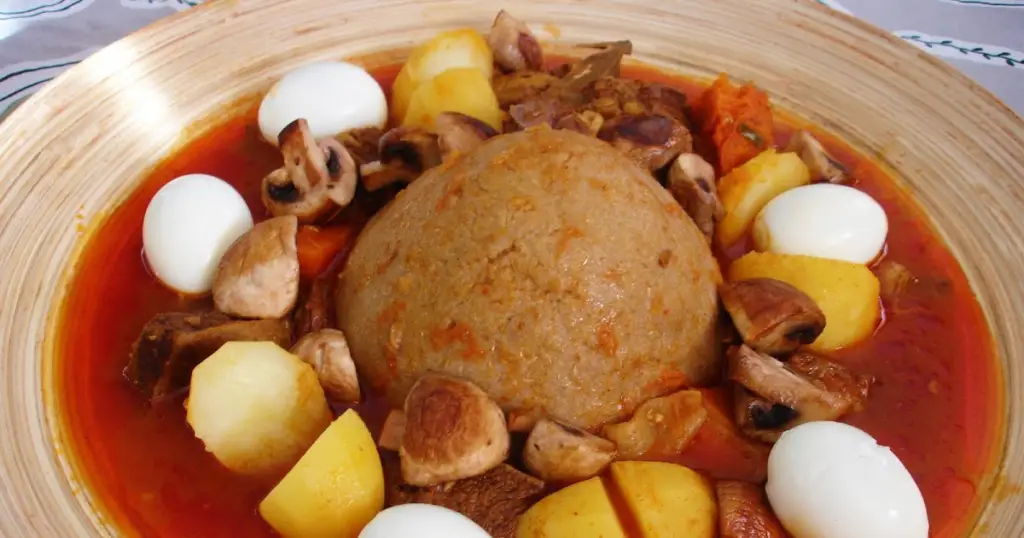
Bazeen is a staple dish originating from the Berber regions of Libya. It is an emblematic representation of Libyan cultural identity and has been passed down through generations. Traditionally, Bazeen is served at communal gatherings, celebrations, and festivities, especially in the western and southern parts of Libya. This dish is made from barley flour that is kneaded into a dough, shaped into a dome, and served with a rich meat and vegetable sauce.
Ingredients for Bazeen
For the Bazeen Dough
- 2 cups of barley flour (can substitute with whole wheat flour if barley is unavailable)
- Boiling water (approximately 2 cups, but the amount can vary based on the flour’s absorption)
- A pinch of salt
For the Sauce
- 1 lb of lamb or beef, cut into chunks
- 2 tablespoons of olive oil
- 1 large onion, finely chopped
- 3-4 garlic cloves, minced
- 1 teaspoon of ground turmeric
- 1 teaspoon of ground paprika
- ½ teaspoon of ground cumin
- Salt and black pepper, to taste
- 1 can (14 oz) of diced tomatoes
- 2-3 cups of beef or lamb stock
- 2 carrots, sliced
- 2 potatoes, peeled and diced
- 1 green bell pepper, sliced
- 2 zucchinis, sliced
- 2 tablespoons of chopped fresh parsley
- 2 tablespoons of chopped fresh cilantro
Libyan food recipes – Bazeen
Preparing the Bazeen Dough
- In a large mixing bowl, gradually add boiling water to the barley flour while continuously stirring with a wooden spoon until a soft, pliable dough forms.
- Once the dough cools slightly, knead it with your hands until smooth and elastic.
- Shape the dough into a dome or mound and place it in a steamer. Steam for about 30-40 minutes until it’s cooked through.
Preparing the Sauce
- In a large pot, heat the olive oil over medium heat.
- Add the meat chunks and brown them on all sides.
- Stir in the chopped onion and cook until translucent.
- Add the minced garlic and spices (turmeric, paprika, cumin, salt, and pepper) and sauté for a couple of minutes until fragrant.
- Mix in the diced tomatoes and let them simmer for a few minutes.
- Pour in the stock, ensuring the meat is well-covered, and bring to a boil. Reduce the heat, cover, and let it simmer until the meat is tender – about 1.5 to 2 hours.
- Add the vegetables (carrots, potatoes, bell pepper, zucchinis) to the pot and continue cooking until they are soft and fully cooked.
- Finish the sauce by stirring in the fresh parsley and cilantro.
Serving
- On a large serving platter, place the steamed Bazeen dough.
- Make a well in the center of the dough using a spoon.
- Pour the meat and vegetable sauce into this well and over the Bazeen.
Serving Suggestions: Bazeen is traditionally eaten by hand. Use pieces of the dough to scoop up the meat and vegetables.
Drink Pairing: To complement the hearty flavors of Bazeen, a glass of buttermilk or a cup of mint tea is often preferred.
Dive into the rich flavors and traditions of Libya with this iconic dish and experience a meal that has been a cornerstone of Libyan gatherings for centuries.
Libyan food recipes – Haraimi (Spicy Fish Stew)

History and Background of Haraimi: A Fiery Symphony from Libya’s Coastal Kitchens
Haraimi, a tantalizing spicy fish stew, emerges from the coastal kitchens of Libya, where the bounty of the Mediterranean Sea meets the aromatic spices of North African cuisine. This dish is a testament to Libya’s rich maritime history and the cultural tapestry woven by Berber, Arab, and Mediterranean influences.
Haraimi is not just a meal; it’s a celebration of the sea’s treasures, spiced to perfection and simmered to create a symphony of flavors that reflect the warmth and diversity of Libya’s coastal region.
Region of Origin: Libya (Coastal Regions)
Haraimi finds its roots along the coastal regions of Libya, where the abundance of fresh seafood has inspired a myriad of dishes. Libya’s culinary heritage, shaped by its coastal geography, celebrates the union of land and sea.
Haraimi, with its blend of robust spices and succulent fish, captures the essence of coastal living, making it a cherished dish in the hearts of those who call Libya’s shores home.
Ingredients for Haraimi:
- Main Ingredients:
- 1 lb white fish fillets (such as sea bass or grouper), cut into chunks
- 1 large onion, finely chopped
- 3 tomatoes, diced
- 3 cloves garlic, minced
- 1/4 cup tomato paste
- 1/4 cup olive oil
- 6 cups fish or vegetable broth
- Salt and pepper to taste
- Spice Blend:
- 1 teaspoon ground cumin
- 1 teaspoon ground coriander
- 1 teaspoon ground paprika
- 1/2 teaspoon cayenne pepper (adjust to taste)
- Pinch of saffron threads (optional)
- For Garnish:
- Fresh cilantro, chopped
- Lemon wedges
Recipe for Haraimi:
Preparation (Serves 4-6):
Estimated Cooking Time: 30-40 minutes
Calories (per serving): Approximately 250 calories
Ingredients Preparation:
- Prepare Fish:
- Cut white fish fillets into bite-sized chunks.
- Chop Vegetables:
- Finely chop the onion.
- Dice the tomatoes.
- Mince garlic.
Cooking Process:
1. Sautéing Aromatics:
- Step 1: In a large pot, heat olive oil over medium heat.
- Step 2: Sauté chopped onions until translucent.
- Step 3: Add minced garlic and continue sautéing until aromatic.
2. Adding Tomatoes and Spices:
- Step 4: Stir in diced tomatoes and tomato paste.
- Step 5: Add ground cumin, ground coriander, ground paprika, cayenne pepper, and saffron (if using).
- Step 6: Season with salt and pepper.
3. Simmering and Cooking Fish:
- Step 7: Pour in fish or vegetable broth, bringing the mixture to a gentle simmer.
- Step 8: Add the fish chunks to the pot, ensuring they are submerged in the broth.
- Step 9: Simmer for 15-20 minutes or until the fish is cooked through.
4. Garnishing and Serving:
- Step 10: Garnish Haraimi with chopped fresh cilantro.
- Step 11: Serve hot, accompanied by lemon wedges for a burst of citrus freshness.
Delight in the vibrant flavors of Libya’s coastal cuisine with Haraimi, a spicy fish stew that captures the essence of the Mediterranean Sea. Share this delightful dish with loved ones, savoring the richness and spice that makes it a true coastal culinary treasure.
Libyan food recipes – Mafrum/Mahshi (Libyan Stuffed Vegetables)

History and Background of Mafrum: A Taste of Tradition from Libya
Mafrum, a savory delight hailing from Libya, is deeply entrenched in the country’s culinary traditions. This dish is a testament to Libya’s cultural and historical diversity, drawing influences from Mediterranean, Arab, and North African cuisines.
Mafrum, also known as Mahshi, showcases the creative use of local ingredients, with a filling of seasoned ground meat encased in vegetables. This dish not only represents Libyan culinary artistry but also brings people together, embodying the spirit of hospitality that is characteristic of Libyan culture.
Region of Origin: Libya
Mafrum originates from the kitchens of Libya, where it has been prepared and enjoyed for generations. Libya’s coastal location ensures an abundance of fresh produce and aromatic spices, contributing to the richness of Mafrum. Whether served as a part of family meals or during special occasions, Mafrum reflects the flavors and traditions unique to Libya, making it a cherished dish that transcends generations.
Ingredients for Mafrum:
- Main Ingredients:
- 6 large potatoes, peeled
- 1 lb ground beef or lamb
- 1 large onion, finely chopped
- 2 tomatoes, diced
- 3 cloves garlic, minced
- 1/4 cup fresh parsley, chopped
- 1/4 cup fresh cilantro, chopped
- 1/4 cup olive oil
- Salt and pepper to taste
- Spice Blend:
- 1 teaspoon ground cumin
- 1 teaspoon ground coriander
- 1/2 teaspoon paprika
- 1/2 teaspoon ground cinnamon
- Pinch of cayenne pepper (optional)
- For Coating:
- 2 eggs, beaten
- Flour for dredging
Recipe for Mafrum:
Preparation (Serves 4-6):
Estimated Cooking Time: 1.5 to 2 hours
Calories (per serving): Approximately 400 calories
Ingredients Preparation:
- Prepare Potatoes:
- Cut each potato in half lengthwise, creating boat-shaped halves.
- Scoop out some of the flesh to create a hollow space for the filling.
- Mix Spice Blend:
- In a small bowl, combine ground cumin, ground coriander, paprika, ground cinnamon, and cayenne pepper (if using).
Cooking Process:
1. Preparing the Filling:
- Step 1: In a skillet, heat olive oil over medium heat.
- Step 2: Sauté chopped onions until translucent.
- Step 3: Add minced garlic and diced tomatoes, cooking until the tomatoes soften.
- Step 4: Add ground meat, breaking it apart and cooking until browned.
- Step 5: Incorporate the spice blend, fresh parsley, and cilantro.
- Step 6: Season with salt and pepper, then let the filling cool.
2. Stuffing the Potatoes:
- Step 7: Stuff the hollowed potatoes with the cooled meat filling.
3. Coating and Cooking:
- Step 8: Dredge each stuffed potato in flour, shaking off excess.
- Step 9: Dip the floured potato in beaten eggs, ensuring it’s well-coated.
- Step 10: In a large skillet, heat olive oil over medium heat.
- Step 11: Pan-fry the stuffed potatoes until golden brown on all sides.
4. Baking:
- Step 12: Preheat the oven to 350°F (175°C).
- Step 13: Transfer the pan-fried Mafrum to a baking dish and bake for 30-40 minutes, ensuring the potatoes are cooked through.
5. Serving:
- Step 14: Serve Mafrum hot, garnished with additional fresh herbs if desired.
Experience the flavors of Libya with Mafrum, a dish that encapsulates the country’s culinary heritage and the warmth of its people. Gather around the table and savor the unique combination of spices and textures in this delightful Libyan creation.
Libyan food recipes – Mbatten

Mbatten is a cherished dish in Libyan cuisine, widely popular for its delicious flavor and unique preparation. Essentially deep-fried potato slices filled with minced meat, spices, and herbs, they make for a perfect snack or side dish. Traditionally, Mbatten is often served during special occasions, gatherings, and the holy month of Ramadan. The dish, while simple in its components, captures the essence of Libyan flavors and culinary traditions.
Ingredients for Mbatten
For the Potato Slices
- 4-5 large potatoes, peeled
- Salted water for soaking
For the Meat Filling
- 1 lb minced beef or lamb
- 1 onion, finely chopped
- 2-3 garlic cloves, minced
- 1 green chili, finely chopped (optional)
- 1 teaspoon ground cumin
- 1 teaspoon ground paprika
- 1 teaspoon ground black pepper
- Salt to taste
- A handful of fresh parsley, finely chopped
- 2 tablespoons olive oil for sautéing
Other Ingredients
- 1 cup of all-purpose flour
- Water (for making a paste)
- Vegetable oil for deep frying
Libyan food recipes – Mbatten
Preparing the Potatoes
- Slice the peeled potatoes into medium-thick slices.
- Soak them in salted water for about 30 minutes. This process helps to remove excess starch and ensures a crispier result.
Preparing the Meat Filling
- In a pan, heat the olive oil over medium heat.
- Add the finely chopped onions and sauté until translucent.
- Introduce the minced meat to the pan and break it up as it cooks.
- Add the garlic, spices (cumin, paprika, black pepper), and salt. Mix well to ensure the spices are evenly distributed.
- Once the meat is browned and fully cooked, stir in the chopped parsley (and chili if you’re using it).
- Remove from heat and set aside.
Assembly and Frying
- Prepare a thick paste by mixing flour with a little water. This paste will act as a ‘glue’ for the potato slices.
- Take two potato slices, spread a bit of the meat mixture on one slice, and then cover it with the second slice. Press the edges and use the flour paste to seal them together.
- Heat the vegetable oil in a deep frying pan. Once hot, carefully slide in the potato packets.
- Fry until golden brown on both sides. Ensure the potato is cooked through.
- Remove and drain on paper towels.
Serving Suggestions: Serve Mbatten hot, accompanied by a side of salad, lemon wedges, and Libyan chili paste or any dip of your choice.
Drink Pairing: A cold beverage, like a lemon mint cooler or a simple iced tea, complements the flavors of Mbatten wonderfully.
Enjoy a taste of Libya’s culinary treasures with Mbatten – a delightful fusion of crispy potatoes and savory meat that promises a burst of flavor with every bite!
Libyan Food – Kebab

History and Background of Libyan Kebab: Grilled Delight with North African Roots
Libyan Kebab, a staple in Libyan cuisine, is a reflection of the rich culinary heritage of North Africa. With influences from Berber, Arab, and Ottoman traditions, Libyan Kebab has evolved into a delicious grilled dish that’s deeply ingrained in Libyan culture.
Historically, the nomadic Berber people contributed to the development of this dish, utilizing locally available ingredients and grilling techniques. Today, Libyan Kebab remains a popular choice for communal gatherings and celebrations, embodying the flavors of the Libyan landscape.
Region of Origin: Libya
Libyan Kebab originates from the diverse landscapes of Libya, a country on the Mediterranean coast of North Africa. The use of local spices, aromatic herbs, and the grilling method reflects the nomadic heritage of the Berber people and the culinary influence of neighboring Mediterranean cultures.
Enjoyed throughout Libya, this grilled delight brings people together, creating a shared experience around the communal table.
Ingredients for Libyan Kebab:
- Main Ingredients:
- 1.5 lbs lamb or beef, cubed
- 1 large onion, finely chopped
- 3 cloves garlic, minced
- 2 tablespoons olive oil
- Juice of 1 lemon
- Spices and Herbs:
- 1 teaspoon ground cumin
- 1 teaspoon ground coriander
- 1 teaspoon paprika
- 1 teaspoon ground cinnamon
- Salt and pepper to taste
- Fresh parsley, chopped (for garnish)
- For Serving:
- Flatbreads or pita
- Yogurt sauce (yogurt mixed with minced garlic and chopped mint)
Recipe for Libyan Kebab:
Preparation (Serves 4):
Estimated Cooking Time: 30 minutes (plus marinating time)
Calories (per serving): Approximately 400 calories
Ingredients Preparation:
- Marinate the Meat:
- In a bowl, combine cubed lamb or beef with chopped onion, minced garlic, olive oil, lemon juice, ground cumin, ground coriander, paprika, ground cinnamon, salt, and pepper.
- Allow the meat to marinate for at least 2 hours or overnight in the refrigerator.
Cooking Process:
1. Skewering the Meat:
- Step 1: Preheat the grill or barbecue.
- Step 2: Thread the marinated meat onto skewers, creating kebabs.
2. Grilling:
- Step 3: Grill the kebabs over medium-high heat, turning occasionally, until the meat is cooked to the desired doneness (approximately 15-20 minutes).
3. Garnishing:
- Step 4: Sprinkle chopped fresh parsley over the grilled kebabs.
4. Serving:
- Step 5: Serve Libyan Kebabs hot, accompanied by flatbreads or pita and a side of yogurt sauce.
Experience the flavors of Libya with Libyan Kebab, a grilled delight that showcases the cultural richness of North African cuisine. Gather around the table and savor the aromatic and succulent taste of this classic dish.
Libyan food recipes – Tajine

When people hear the term “Tajine” (or “Tagine”), they often associate it with the Moroccan slow-cooked stew. However, Tajine in Libyan cuisine is a distinct dish. While both dishes share the name and North African origins, Libyan Tajine is more akin to a flavorful baked omelette loaded with various ingredients.
Background to Tajine
Libyan Tajine is a popular and versatile dish made with layers of vegetables, meat (often minced), and a spiced egg mixture that binds everything together. It’s baked until set and often enjoyed with bread. Like many traditional dishes, there are countless variations depending on the region, family traditions, and personal preferences.
Libyan food recipes – Tajine Ingredients
Meat:
- 500g of minced lamb or beef (or a combination of both)
Vegetables:
- 2 onions, finely chopped
- 2-3 tomatoes, finely chopped
- 1 green bell pepper, finely chopped
- 1 red bell pepper, finely chopped
- 2-3 garlic cloves, minced
- Optional: other vegetables like zucchini or aubergine, thinly sliced
Egg Mixture:
- 4-6 eggs
- 100ml of milk or cream
- 50g of grated cheese (cheddar or mozzarella work well)
- Salt and pepper to taste
Spices & Herbs:
- 1 tsp ground cumin
- 1 tsp paprika
- 1/2 tsp ground turmeric
- 1/2 tsp chili powder (adjust based on heat preference)
- Salt, to taste
- A handful of fresh parsley, chopped
Liquids:
- 2 tbsp olive oil or vegetable oil
Others:
- 50g of feta cheese, crumbled (optional)
Libyan food recipes – Tajine
Meat & Vegetables Preparation:
- In a large skillet or frying pan, heat the oil over medium heat. Add the chopped onions and sauté until they become translucent.
- Add the minced meat, breaking it up with a spatula or wooden spoon. Cook until browned.
- Stir in the tomatoes, bell peppers, garlic, and spices (cumin, paprika, turmeric, chili powder, salt). Cook for another 5-7 minutes until the vegetables soften. Remove from heat and set aside.
Egg Mixture:
- In a mixing bowl, whisk together the eggs, milk or cream, grated cheese, salt, and pepper until well combined.
Layering & Baking:
- Preheat your oven to 180°C (350°F).
- In a greased baking dish, start by layering any optional thinly sliced vegetables like zucchini or aubergine.
- Evenly spread the meat and vegetable mixture over the base.
- Pour the egg mixture over the top, ensuring it spreads evenly and covers the meat and vegetables.
- Sprinkle the top with crumbled feta cheese and chopped parsley.
- Place the baking dish in the oven and bake for about 25-30 minutes, or until the egg mixture is set and the top is golden brown.
Serving:
- Remove the Tajine from the oven and let it cool slightly before serving.
- Cut it into squares or slices and serve with fresh bread on the side.
Enjoy your Libyan Tajine! This dish is a delightful blend of flavors and can easily be adapted to suit personal tastes or available ingredients.
Libyan food recipes – Imbakbaka recipe (Libyan Chicken Pasta)
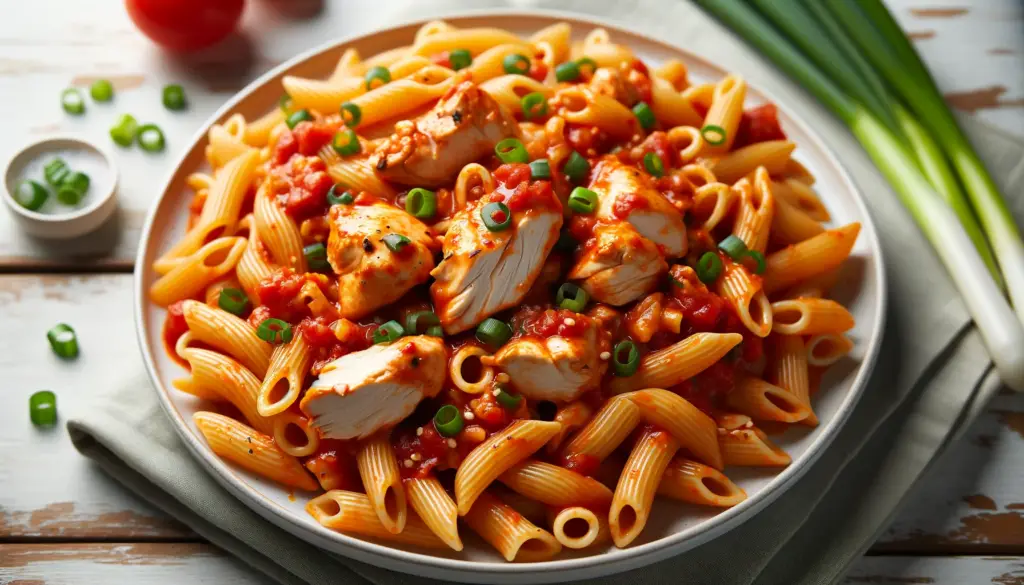
This is a delicious and comforting dish from Libyan cuisine, often enjoyed as a quick meal. Imbakbaka is essentially a spicy chicken pasta, and its unique blend of spices distinguishes it from other pasta dishes.
Background to Imbakbaka recipe
Imbakbaka is a traditional Libyan dish, particularly popular in the eastern part of the country. It’s typically made with small pasta shapes, chicken, and a tomato-based sauce infused with traditional spices. The dish is often associated with good times and family gatherings and is perfect for those seeking a hearty meal.
Libyan food recipes – Imbakbaka Ingredients
Meat:
- 500g chicken, cut into pieces (can use a mix of boneless and bone-in pieces)
Pasta:
- 250g small pasta shapes (like orzo, ditalini, or broken vermicelli)
Vegetables & Herbs:
- 1 large onion, finely chopped
- 3-4 garlic cloves, minced
- 2-3 ripe tomatoes, finely chopped or pureed
- A handful of fresh parsley, chopped
Spices:
- 1 tsp ground black pepper
- 1 tsp ground paprika
- 1/2 tsp ground turmeric
- 1/2 tsp chili powder or to taste (adjust based on heat preference)
- 1 tsp ground cumin
- Salt, to taste
Liquids:
- 2 tbsp olive oil or vegetable oil
- 4-5 cups of water or chicken broth
Others:
- 1-2 tbsp tomato paste (optional, for a richer sauce)
- 1 green bell pepper, chopped (optional)
Libyan food recipes – Imbakbaka recipe
Imbakbaka recipe – Chicken Preparation
- In a large pot, heat the oil over medium heat. Add the chopped onions and sauté until they turn translucent.
- Add the minced garlic and sauté for another minute.
- Introduce the chicken pieces to the pot, browning them slightly on all sides.
Imbakbaka recipe – Building the Sauce
- Mix in the tomatoes (and tomato paste if using), followed by all the spices (paprika, turmeric, cumin, black pepper, chili powder, and salt).
- If you’re using bell pepper, add it now.
- Stir well, ensuring the chicken pieces are coated with the sauce.
- Pour in the water or chicken broth, ensuring the chicken is fully submerged. Bring the mixture to a boil.
Simmering
- Once boiling, reduce the heat to low, cover the pot, and let it simmer for about 20-25 minutes, or until the chicken is nearly cooked through.
Imbakbaka recipe – Adding Pasta
- Add the pasta to the pot, stirring well to ensure it’s integrated into the sauce.
- Let it cook for the duration recommended on the pasta package or until the pasta is soft and has absorbed the flavors of the sauce. You might need to add more water or broth if the mixture becomes too dry.
Finishing Touches
- A few minutes before turning off the heat, stir in the chopped parsley for a fresh touch.
Serving
- Serve the Imbakbaka hot. It’s traditionally enjoyed straight from the pot with a side of bread, and some people also like to have a fresh salad on the side.
Enjoy your Libyan Imbakbaka! It’s a flavorful combination of spices, tender chicken, and pasta that is sure to please.
Libyan food recipes – Shakshuka

Shakshuka is a popular dish in many countries of the Mediterranean and North Africa, including Libya. The term “Shakshuka” generally refers to a dish of eggs poached in a spicy tomato, chili pepper, and onion sauce, often spiced with cumin.
Background to Shakshuka
While the exact origins of Shakshuka are debated, it’s widely agreed that the dish has its roots in North Africa, particularly Tunisia. However, it has been embraced and adapted by many countries, including Libya, Egypt, Israel, and more. In Libya, like in other North African countries, Shakshuka is often eaten for breakfast, but it can also be a comforting dinner dish, typically served with bread to mop up the delicious sauce.
Libyan food recipes – Shakshuka Ingredients:
Eggs:
- 4 to 6 large eggs
Vegetables & Herbs:
- 1 large onion, finely chopped
- 1 bell pepper (red or green), finely chopped
- 3-4 ripe tomatoes, finely chopped or pureed
- 3-4 garlic cloves, minced
- A handful of fresh parsley or cilantro, chopped (for garnish)
Spices:
- 1 tsp ground paprika
- 1/2 tsp ground cumin
- 1/4 tsp chili powder or to taste (adjust based on heat preference)
- Salt and black pepper, to taste
Liquids:
- 2 tbsp olive oil or vegetable oil
Others:
- 1 small chili pepper, finely chopped (optional for extra heat)
- Feta cheese, crumbled (optional, for garnish)
Libyan food recipes – Shakshuka Directions:
Sauce Preparation:
- In a large skillet or frying pan, heat the oil over medium heat. Add the chopped onions and bell pepper, and sauté until they turn soft and translucent.
- Stir in the minced garlic and sauté for another 1-2 minutes until aromatic.
- Add the tomatoes to the skillet. If you’re using fresh tomatoes, you can also add a tablespoon of tomato paste for a richer sauce.
- Mix in the spices: paprika, cumin, chili powder, salt, and black pepper. If using the chili pepper, add it now.
- Let the mixture simmer for about 10-15 minutes, allowing the flavors to meld and the sauce to thicken slightly.
Egg Poaching:
- Make small wells or indentations in the sauce using a spoon. Carefully crack an egg into each well.
- Cover the skillet and let it cook on low heat for about 5-7 minutes, or until the egg whites are set but the yolks remain runny. If you prefer more well-cooked yolks, you can extend the cooking time.
Garnishing & Serving:
- Sprinkle the Shakshuka with chopped parsley or cilantro and, if you like, some crumbled feta cheese.
- Serve hot, straight from the skillet. Shakshuka is best enjoyed with crusty bread, perfect for dipping into the sauce and egg yolk.
Enjoy your Libyan Shakshuka! It’s a warming, flavorful, and fulfilling dish that’s perfect for any time of the day.
And just in case you thought we had forgotten about those with a sweet tooth!
Libyan Cuisine – Puddings
Puddings in Libyan cuisine provide a perfectly sweet ending, balancing out the spicy and savory essence of the main courses.
Libyan food recipes – Ghreyba (Libyan Butter Cookies)

Ghreyba, also known as ghraybeh or ghraïba, is a traditional butter cookie prevalent across various parts of the Middle East and North Africa, with Libya being no exception. The Libyan version of these cookies is characterized by its melt-in-the-mouth texture and delicate flavor, often elevated with the addition of nuts, seeds, or spices. Ghreyba plays a starring role in many celebratory occasions, especially during Eid festivities and family gatherings. The simplicity of the cookie, combined with its rich, buttery taste, makes it a beloved treat in many Libyan homes.
Ingredients for Ghreyba (Libyan Butter Cookies)
- 1 cup (2 sticks) unsalted butter, room temperature
- 1 cup powdered sugar (also known as confectioner’s sugar)
- 2 cups all-purpose flour
- 1/2 teaspoon baking powder
- A pinch of salt
- 1 teaspoon vanilla extract or ground cardamom (based on preference)
- Whole almonds or pistachios for garnish (optional)
- Powdered sugar for dusting (optional)
Libyan food recipes – Ghreyba
Cookie Dough Preparation
- Start by beating the butter in a mixing bowl until it becomes creamy and smooth.
- Gradually add in the powdered sugar and continue beating until the mixture is light and fluffy.
- If you’re using vanilla extract, add it in now. If you’re opting for cardamom, it will be added later with the flour.
- In a separate bowl, sift together the flour, baking powder, salt, and cardamom (if you’re using it).
- Gradually add the dry ingredients to the butter mixture, blending well to form a smooth dough.
Shaping the Cookies
- Preheat your oven to 325°F (165°C) and line a baking sheet with parchment paper.
- Take small portions of the dough and shape them into small balls or slightly flattened discs. Place them on the prepared baking sheet, ensuring there’s enough space between each cookie.
- If desired, press a whole almond or pistachio into the center of each cookie for garnish.
Baking
- Place the baking sheet in the preheated oven and bake for approximately 15-20 minutes, or until the cookies are lightly golden around the edges but still pale on top. It’s essential not to overbake Ghreyba as it should maintain its delicate texture.
- Once baked, remove from the oven and allow the cookies to cool on the baking sheet for a few minutes before transferring them to a cooling rack.
Serving
- Once completely cooled, you can dust the Ghreyba with additional powdered sugar if desired.
- Store in an airtight container.
Serving Suggestions: Ghreyba is best enjoyed with a cup of aromatic mint tea or your favorite coffee, making it a perfect treat for afternoon tea sessions or after a meal.
Savor the delightful essence of Libyan traditions with Ghreyba – a cookie that promises simplicity in its ingredients but delivers a rich, unparalleled taste in every bite.
Libyan food recipes – Assidat Zgougou (Pine Seeds Pudding)
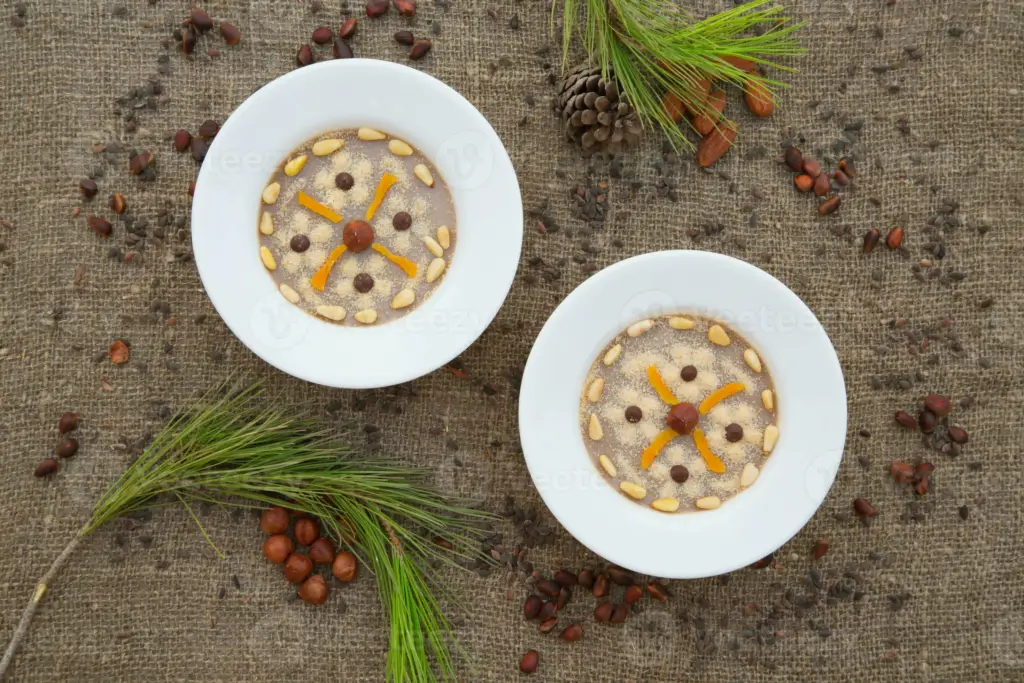
This is a special Tunisian dessert, often prepared to celebrate the birth of the Prophet Muhammad during the Mawlid festival. However, its popularity extends to various parts of North Africa, including Libya. The dish is crafted from zgougou seeds, which are the seeds of the Aleppo pine tree, and it holds cultural and spiritual significance. The combination of pine seeds, subtly infused with aromatic flavors and garnished with a variety of nuts, makes Assidat Zgougou a cherished treat during festive occasions.
Ingredients for Assidat Zgougou (Pine Seeds Pudding)
- 1 cup zgougou seeds (Aleppo pine seeds)
- 6 cups water
- 1 cup granulated sugar (adjust to taste)
- 1/2 cup cornstarch or wheat starch
- 1 tablespoon orange blossom water or rose water (based on preference)
- 1 teaspoon ground cinnamon
- Nuts for garnish (such as almonds, pistachios, or walnuts)
- Optional: Dried fruits (like raisins or dates) for garnish
- Optional: Whipped cream or a sprinkle of desiccated coconut for topping
Libyan food recipes – Assidat Zgougou
Preparing the Zgougou Paste
- Begin by washing the zgougou seeds thoroughly under running water.
- In a large pot, add the washed seeds and the 6 cups of water. Let it soak overnight or for at least 12 hours.
- After soaking, blend the zgougou and water mixture in a blender or food processor until it forms a smooth paste.
Cooking the Pudding
- In a separate bowl, dissolve the cornstarch or wheat starch in a cup of water until smooth, ensuring there are no lumps.
- Transfer the zgougou paste to a large saucepan and place it over medium heat. Gradually add the dissolved starch mixture, stirring continuously to prevent lumps from forming.
- Continue to cook, stirring regularly, until the mixture thickens.
- Once thickened, add in the sugar and mix until fully dissolved.
- Reduce the heat and allow the mixture to simmer for an additional 10-15 minutes, ensuring it doesn’t stick to the bottom of the pan.
- Remove from heat and stir in the orange blossom water or rose water, along with the ground cinnamon.
Serving
- Transfer the Assidat Zgougou to individual serving bowls or a large serving dish.
- Allow the pudding to cool to room temperature. Once cooled, you can refrigerate it for a few hours if you prefer it chilled.
- Before serving, garnish with a variety of nuts, dried fruits, whipped cream, or desiccated coconut, based on your preference.
Serving Suggestions: Assidat Zgougou is often enjoyed as a standalone dessert due to its rich flavors. However, pairing it with a cup of light green tea or mint tea can enhance the dessert experience.
Indulge in the unique and delightful essence of Assidat Zgougou, a dessert that beautifully intertwines Libyan traditions with the natural bounty of the Aleppo pine.
Libyan food recipes – Basbousa (Libyan Semolina Cake)

While Basbousa is popular in many countries across the Middle East and North Africa, each country, including Libya, has its own twist on this beloved dessert. Also known as “Hareeseh” in some regions, Basbousa is a sweet semolina cake that’s typically soaked in simple syrup and often topped with almonds or coconut.
Background to Basbousa (Libyan Semolina Cake)
Basbousa has been a staple dessert in various cultures for centuries. It’s believed to have ancient Egyptian roots but has been embraced by countries all over the Arab world. In Libya, as in many other countries, it’s often served during special occasions, gatherings, or as a sweet treat after meals.
Libyan food recipes – Basbousa Ingredients
For the Cake
- 2 cups semolina
- 1 cup granulated sugar
- 1 cup plain yogurt
- 1 cup unsweetened desiccated coconut (optional)
- 1/4 cup unsalted butter, melted
- 1 tsp baking powder
- Almonds or blanched almonds, for garnish
For the Syrup
- 1 cup granulated sugar
- 1/2 cup water
- A few drops of lemon juice
- 1 tsp vanilla extract or rose water (optional for added flavor)
Libyan food recipes – Basbousa
For the Syrup
Preparation:
- In a saucepan, combine sugar, water, and lemon juice.
- Bring the mixture to a boil, then reduce the heat and let it simmer for about 10 minutes, or until it thickens slightly.
- Remove from heat and add vanilla extract or rose water if using. Allow the syrup to cool completely.
For the Cake
Mixing Ingredients:
- In a large mixing bowl, combine semolina, sugar, yogurt, desiccated coconut (if using), melted butter, and baking powder. Mix until all ingredients are well incorporated and a thick batter forms.
Baking:
- Preheat your oven to 180°C (350°F).
- Transfer the batter to a greased baking dish, smoothing the top with a spatula or the back of a spoon.
- Score the batter into square or diamond shapes using a knife. Place an almond in the center of each piece.
- Bake in the preheated oven for about 25-30 minutes or until the top is golden brown and a toothpick inserted into the center comes out clean.
Soaking:
- Once out of the oven, immediately pour the cooled syrup evenly over the hot Basbousa. This will allow the cake to soak up the syrup, making it sweet and moist.
- Allow the Basbousa to sit for at least an hour to fully absorb the syrup.
Serving:
- Serve Basbousa at room temperature. It can be enjoyed as is or with a side of whipped cream or a scoop of ice cream.
Enjoy your Libyan Basbousa! It’s a delightful, sweet, and moist cake that’s sure to satisfy your sweet cravings.
Libyan Food – Asida

History and Background of Asida: A Culinary Tradition from Sudan
Asida, a staple in Sudanese cuisine, has a rich history rooted in the cultural and culinary heritage of the region. This traditional dish has been a part of Sudanese households for generations, symbolizing warmth, hospitality, and communal gatherings.
Asida’s history is deeply intertwined with Sudanese customs, and it serves not only as a nourishing food source but also as a representation of the unity and connection among the people of Sudan.
Region of Origin: Sudan
Originating from Sudan, Asida reflects the diverse influences of North African and Middle Eastern culinary traditions. This dish is commonly prepared and enjoyed across Sudan, becoming a symbol of celebration during special occasions and family events.
Asida’s popularity also extends to neighboring regions, highlighting its cultural significance and the shared appreciation for this comforting and versatile Sudanese dish.
Ingredients for Asida:
- Main Ingredients:
- 2 cups sorghum flour
- 2 cups water
- 1 cup whole wheat flour
- 1 cup milk (or more for consistency)
- 1/2 cup clarified butter (samna)
- Pinch of salt
- Optional Toppings:
- Honey
- Nuts (e.g., almonds or peanuts)
- Dates
Recipe for Asida:
Preparation (Serves 4-6):
Estimated Cooking Time: 30-40 minutes
Calories (per serving): Approximately 300 calories
Ingredients Preparation:
- Prepare Sorghum Mixture:
- In a mixing bowl, combine sorghum flour, water, and a pinch of salt. Mix until smooth.
- Cooking Asida:
- In a large pot, bring the sorghum mixture to a boil over medium heat, stirring continuously to avoid lumps.
- Gradually add whole wheat flour while stirring to maintain a smooth consistency.
- Finishing Asida:
- Reduce heat to low and continue stirring until the mixture thickens.
- Add milk gradually, stirring to achieve a creamy texture.
- Drizzle clarified butter into the mixture, stirring continuously until well incorporated.
- Serving:
- Transfer the Asida to a serving dish.
- Create a well in the center and pour more clarified butter.
- Serve Asida warm, optionally topping with honey, nuts, or dates.
Asida, a quintessential Sudanese dish, embodies the essence of Sudanese hospitality and the cultural richness of the region. Enjoy the comforting and wholesome flavors of Asida, a dish that brings people together and carries the heritage of Sudanese culinary traditions.
Libyan food recipes – Kunafa or Knafeh (Layered Pastry with Cheese)

History and Background of Kunafa: A Sweet Tale from Middle Eastern Heritage
Kunafa, also known as Knafeh, is a delectable layered pastry that has its roots deeply embedded in the rich culinary tapestry of the Middle East. With a history dating back centuries, Kunafa has evolved across various cultures and regions, becoming a beloved dessert in Arab, Turkish, and Levantine cuisines.
The layers of thin pastry, the creamy filling, and the sweet syrup create a symphony of textures and flavors that embody the essence of Middle Eastern sweetness. This dessert is not just a treat for the taste buds; it’s a cultural experience that reflects the hospitality and celebration inherent in Middle Eastern traditions.
Region of Origin: Middle East
Kunafa originated in the Middle East, and its popularity has spread throughout the region, capturing the hearts of dessert enthusiasts. The exact origin of Kunafa is debated, with different countries claiming variations of the dish.
Nevertheless, it remains a quintessential sweet delight in Middle Eastern cuisine, often enjoyed during special occasions, celebrations, and festive gatherings.
Ingredients for Kunafa:
- For the Pastry Layers:
- 1 lb shredded phyllo or kataifi dough
- 1 cup unsalted butter, melted
- For the Filling:
- 2 cups unsalted akawi cheese or mozzarella, shredded
- For the Sugar Syrup:
- 2 cups granulated sugar
- 1 cup water
- 1 tablespoon lemon juice
- 1 teaspoon orange blossom water or rose water (optional)
- For Garnish:
- Crushed pistachios or chopped nuts (optional)
Recipe for Kunafa:
Preparation (Serves 8-10):
Estimated Cooking Time: 1.5 to 2 hours
Calories (per serving): Approximately 300 calories
Ingredients Preparation:
- Prepare Pastry Layers:
- If using shredded phyllo, separate the strands.
- Toss the pastry strands with melted butter until evenly coated.
- Shred Cheese:
- Shred the akawi cheese or mozzarella.
Cooking Process:
1. Layering the Bottom and Top:
- Step 1: Preheat the oven to 350°F (175°C).
- Step 2: Press half of the buttered pastry strands into the bottom of a baking pan to form the bottom layer.
- Step 3: Spread the shredded cheese evenly over the bottom layer.
- Step 4: Cover the cheese with the remaining buttered pastry strands to form the top layer.
2. Baking:
- Step 5: Bake in the preheated oven for 40-50 minutes or until golden brown.
3. Sugar Syrup:
- Step 6: While the Kunafa is baking, prepare the sugar syrup by combining sugar, water, and lemon juice in a saucepan.
- Step 7: Bring the mixture to a boil, then simmer for 10-15 minutes until it thickens slightly.
- Step 8: Remove from heat and add orange blossom water or rose water if desired.
4. Pouring Syrup and Garnishing:
- Step 9: As soon as Kunafa is out of the oven, pour the sugar syrup evenly over the hot pastry.
- Step 10: Allow the Kunafa to absorb the syrup for 10-15 minutes.
- Step 11: Garnish with crushed pistachios or chopped nuts if desired.
5. Serving:
- Step 12: Cut Kunafa into squares or diamonds and serve warm.
Indulge in the sweet traditions of the Middle East with Kunafa, a layered pastry that is a true celebration of flavors and textures. Share this delightful dessert with friends and family and savor the sweetness of Middle Eastern hospitality.
Libyan food recipes – Ka’ak (Bread Rings)

History and Background of Ka’ak: The Symbolic Bread of Libyan Cuisine
Ka’ak, a staple in Libyan cuisine, represents more than just a bread; it symbolizes the rich history and cultural heritage of Libya. These bread rings have been a traditional part of Libyan meals for generations, often served during special occasions and celebrations.
The art of making Ka’ak has been passed down through families, and the recipe reflects the resourcefulness of Libyan cooking, utilizing simple ingredients to create a versatile and essential element of the Libyan dining experience.
Region of Origin: Libya
Ka’ak originates from the kitchens of Libya, a North African country with a diverse culinary landscape influenced by Berber, Arab, and Mediterranean traditions.
The preparation and consumption of Ka’ak are deeply ingrained in Libyan culture, making it a beloved and cherished bread that accompanies meals, from casual family dinners to festive gatherings.
Ingredients for Ka’ak:
- Main Ingredients:
- 4 cups all-purpose flour
- 1 cup semolina
- 1 tablespoon sugar
- 1 tablespoon yeast
- 1 teaspoon salt
- 2 cups warm water (approximately)
- For Coating:
- Sesame seeds or nigella seeds
Recipe for Ka’ak:
Preparation (Makes approximately 12 bread rings):
Estimated Cooking Time: 2 hours (including rising time)
Calories (per serving): Approximately 150 calories per bread ring
Ingredients Preparation:
- Activate Yeast:
- In a small bowl, combine yeast, sugar, and warm water. Allow it to sit for 5-10 minutes until foamy.
Dough Preparation:
1. Mixing Dry Ingredients:
- Step 1: In a large mixing bowl, combine all-purpose flour, semolina, and salt.
2. Forming Dough:
- Step 2: Create a well in the center of the dry ingredients and pour in the activated yeast mixture.
- Step 3: Gradually incorporate the dry ingredients into the wet until a dough forms.
3. Kneading and Rising:
- Step 4: Transfer the dough to a floured surface and knead for about 10 minutes until smooth.
- Step 5: Place the dough in a greased bowl, cover with a kitchen towel, and let it rise for 1-1.5 hours or until doubled in size.
Bread Ring Formation:
4. Shaping Ka’ak:
- Step 6: Preheat the oven to 375°F (190°C).
- Step 7: Punch down the risen dough and divide it into 12 equal portions.
- Step 8: Roll each portion into a long rope and form a circle, pinching the ends together.
5. Coating and Baking:
- Step 9: Dip each bread ring in water, then coat with sesame seeds or nigella seeds.
- Step 10: Place the coated Ka’ak on a baking sheet and let them rest for 15 minutes.
- Step 11: Bake in the preheated oven for 15-20 minutes or until golden brown.
6. Cooling and Serving:
- Step 12: Allow Ka’ak to cool on a wire rack before serving.
Enjoy the delightful simplicity of Ka’ak, a symbol of Libyan culinary heritage. Whether served as an accompaniment to meals or enjoyed on its own, this bread offers a taste of Libya’s cultural traditions and the artistry of homemade baking.
Libyan food recipes – Assidat Zgougou (Pine Seeds Pudding)

History and Background of Assidat Zgougou: A Libyan Pudding Tradition
Assidat Zgougou, a delightful pine seeds pudding, is deeply rooted in Libyan culinary traditions. This sweet treat is particularly associated with the celebration of Mawlid al-Nabi, the observance of the birth of the Islamic prophet Muhammad.
Assidat Zgougou reflects the cultural significance of festive occasions in Libya, where family and friends come together to share in the joy of religious and social festivities. The pudding, adorned with pine nuts and a touch of floral water, is not only a delectable dessert but also a symbol of communal unity and celebration.
Region of Origin: Libya
Assidat Zgougou originates from Libya, a country on the Mediterranean coast of North Africa. It holds a special place in Libyan culture, especially during Mawlid al-Nabi, where families prepare and share this pudding as a gesture of joy and gratitude.
The dessert reflects the warm hospitality and deep-rooted traditions of Libyan households.
Ingredients for Assidat Zgougou:
- Main Ingredients:
- 1 cup ground pine nuts (zgougou)
- 1 cup fine semolina
- 1 cup granulated sugar
- 4 cups water
- 1 tablespoon orange blossom water
- For Garnish:
- Whole pine nuts
Recipe for Assidat Zgougou:
Preparation (Serves 6-8):
Estimated Cooking Time: 30 minutes
Calories (per serving): Approximately 300 calories
Ingredients Preparation:
- Prepare Pine Nuts:
- Grind pine nuts to a fine powder using a food processor.
Pudding Preparation:
1. Mixing Ingredients:
- Step 1: In a bowl, combine ground pine nuts, fine semolina, and granulated sugar.
2. Cooking Pudding:
- Step 2: In a saucepan, bring 4 cups of water to a boil.
- Step 3: Gradually add the dry mixture to the boiling water, stirring continuously to avoid lumps.
- Step 4: Continue stirring over medium heat until the pudding thickens.
3. Adding Flavor:
- Step 5: Once the pudding reaches a smooth consistency, add orange blossom water and mix well.
4. Serving:
- Step 6: Pour the pudding into serving bowls or a communal dish.
Garnishing:
5. Decorating with Pine Nuts:
- Step 7: Garnish the top of the pudding with whole pine nuts, creating an attractive pattern.
6. Setting and Cooling:
- Step 8: Allow the pudding to cool and set at room temperature.
7. Refrigerating:
- Step 9: For a firmer texture, refrigerate the Assidat Zgougou for a few hours before serving.
Serving Tradition:
8. Presenting and Sharing:
- Step 10: Serve Assidat Zgougou chilled, presenting it as a centerpiece for festive gatherings.
- Step 11: Share the joy and sweetness with family and friends, celebrating the cultural significance of the occasion.
Indulge in the richness of Libyan festivities with Assidat Zgougou, a pine seeds pudding that embodies the warmth, tradition, and sweetness of the North African culinary heritage. Enjoy this delightful dessert with loved ones, creating lasting memories around the shared table.
Libyan food recipes – Libyan Baklava
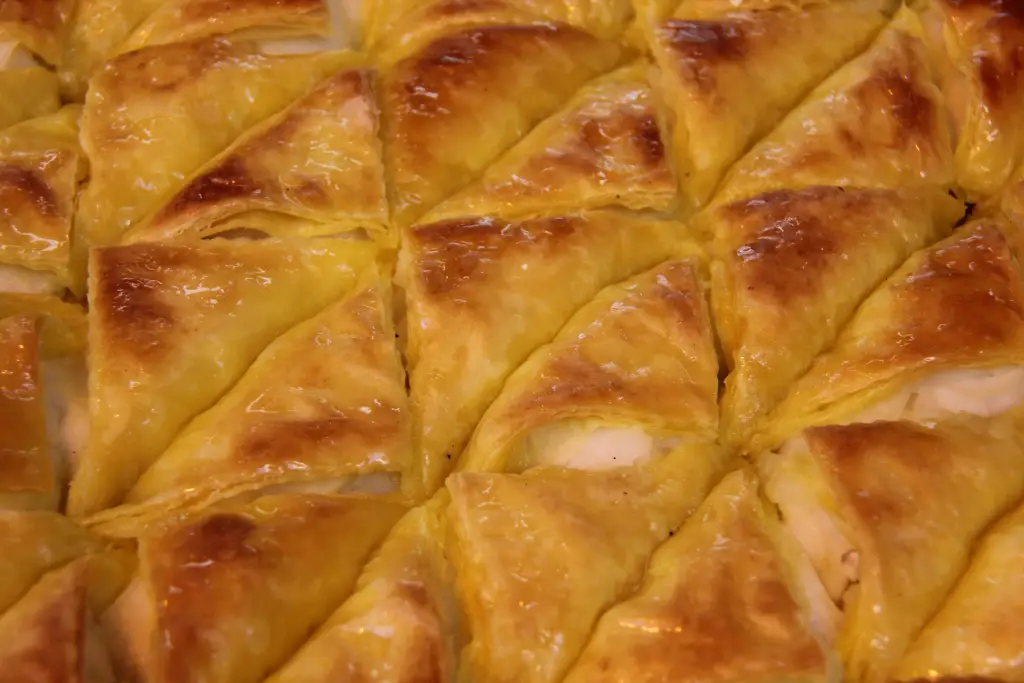
Baklava is a famous sweet pastry that’s beloved throughout the Middle East, the Balkans, and North Africa, including Libya. While the origins of baklava are debated—some claim it’s Turkish, others believe it’s Greek or Persian—what’s certain is that many cultures have adopted and adapted baklava to their own tastes and traditions.
In Libya and other parts of North Africa, the preparation of baklava often includes local nuts and spices, making it distinct from its counterparts in other regions.
Background to Libyan Baklava
Libyan baklava is typically characterized by its layers of phyllo dough, honey or sugar syrup, and a filling made of a combination of nuts such as almonds, walnuts, or pistachios. The inclusion of local spices like cinnamon or cloves gives Libyan baklava a unique taste.
Libyan food recipes – Libyan Baklava Ingredients:
For the Baklava:
- package of phyllo dough (16 oz), thawed.
- 2 cups mixed nuts (almonds, walnuts, pistachios), finely chopped.
- 1 tsp ground cinnamon.
- 1/2 tsp ground cloves (optional)
- 1 cup unsalted butter, melted.
For the Syrup:
- 1 cup granulated sugar
- 1 cup water
- 1/2 cup honey
- 1 tsp lemon juice
- 1 tsp vanilla or rose water (optional for added flavor)
Libyan food recipes – Libyan Baklava
For the Syrup:
Preparation:
- In a saucepan, combine sugar, water, and lemon juice.
- Bring the mixture to a boil, then reduce the heat and let it simmer for about 10 minutes.
- Stir in honey and continue simmering for another 5 minutes.
- Remove from heat, add vanilla or rose water if using, and let it cool.
For the Baklava:
Nut Mixture:
- In a mixing bowl, combine the finely chopped nuts, cinnamon, and cloves. Mix them well.
Assembling:
- Preheat your oven to 175°C (350°F).
- Brush a baking dish with melted butter.
- Lay one sheet of phyllo dough in the dish and brush with melted butter. Repeat this process, layering and buttering, for about 8 sheets.
- Spread half of the nut mixture over the layered phyllo.
- Continue layering and buttering another 8 sheets of phyllo on top of the nut mixture.
- Spread the remaining nut mixture over these layers.
- Finish with a final 8 layers of buttered phyllo.
Cutting & Baking:
- Using a sharp knife, cut the baklava into diamond or square shapes.
- Bake in the preheated oven for about 30-40 minutes, or until the baklava is golden brown on top.
Soaking:
- Immediately after removing the baklava from the oven, pour the cooled syrup over the hot pastry, ensuring it’s evenly distributed.
- Allow the baklava to sit for several hours, preferably overnight, to fully soak up the syrup and develop its flavors.
Serving:
- Serve the baklava at room temperature. Optionally, you can garnish with ground or chopped nuts on top for an extra touch.
Enjoy your Libyan Baklava! This sweet, nutty, and buttery dessert is sure to be a hit at any gathering or special occasion.
These dishes are just a few examples of the many delicious dinner options that Libyan cuisine has to offer. Whether you want to try a classic Libyan recipe or put your own spin on a traditional dish, Libyan cuisine is a great source of inspiration for your next dinner party or family meal.
Conclusion
[Libyan cuisine] is a testament to the country’s vast cultural influences and rich history. It’s a dance of flavors, aromas, and textures. Each dish, each ingredient tells a tale of trade routes, historical events, and cherished family gatherings. To taste Libyan food is to embrace its heritage, its stories, and its heart.
FAQ’s
What’s the staple grain in Libyan cuisine?
Couscous predominantly graces the Libyan plate.
Is Libyan food very spicy?
Libyan dishes often have a mild to moderate spice level, emphasizing flavor overheat.
How prominent is seafood in Libyan dishes?
Given its Mediterranean coast, seafood, especially fish, is a key ingredient in many coastal areas.
Which meat is commonly used in Libyan dishes?
Lamb is the most commonly used meat, followed by chicken.
What are some traditional Libyan beverages?
Mint tea and Gahwa (Arabic coffee) are traditional favorites.
What Spice in Taktouka and Shakshuka?
Taktouka and shakshuka are popular North African dishes that incorporate spice in their recipes. Both dishes feature a blend of spices like cumin, paprika, and chili powder, giving them their distinct flavor profiles.
The spice in taktouka and shakshuka adds a delightful kick to these flavorful and comforting dishes.
Are there vegetarian options in Libyan cuisine?
Absolutely! Many salads, couscous variations, and vegetable-based dishes cater to vegetarians,


Top-notch commentary